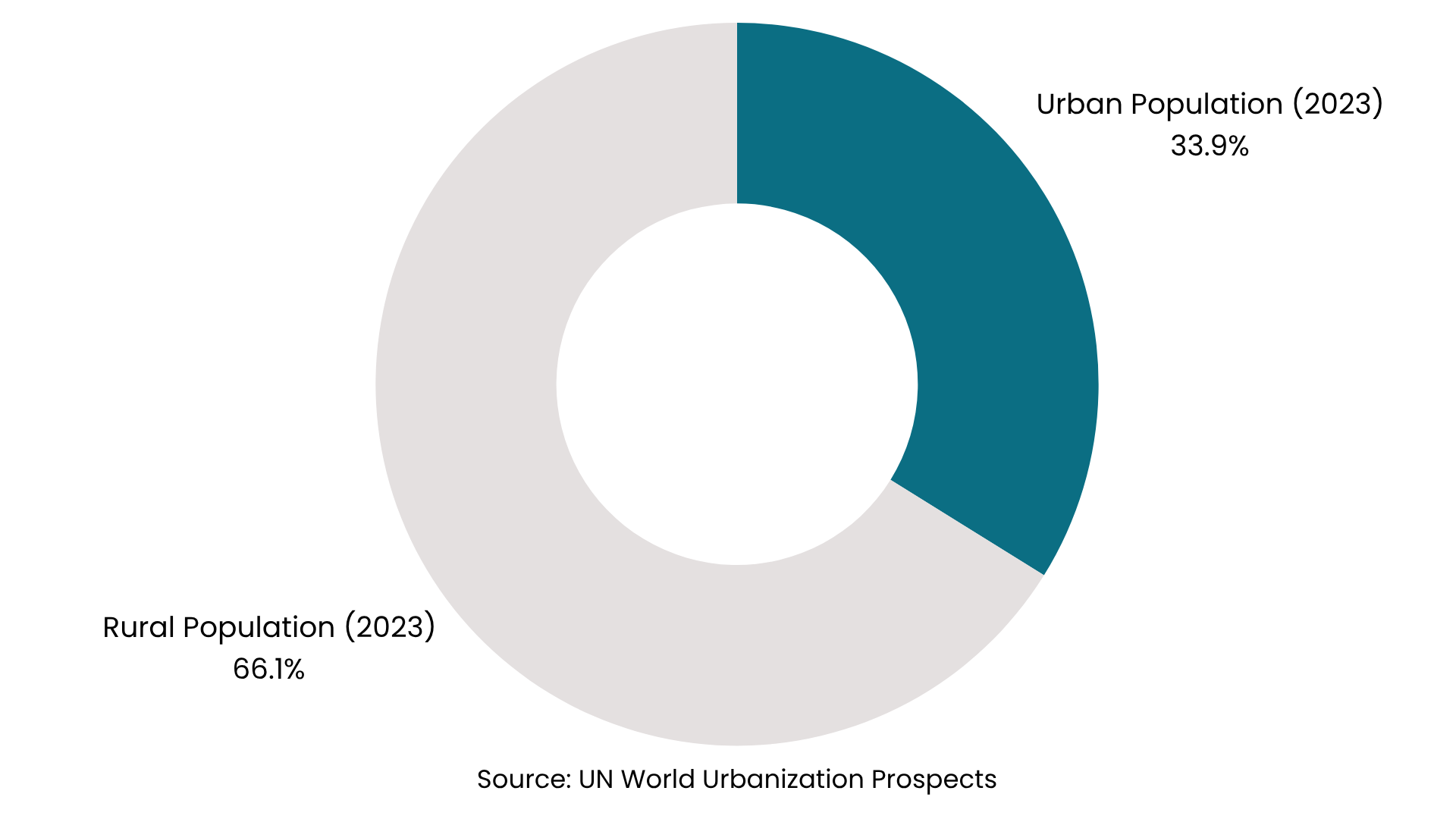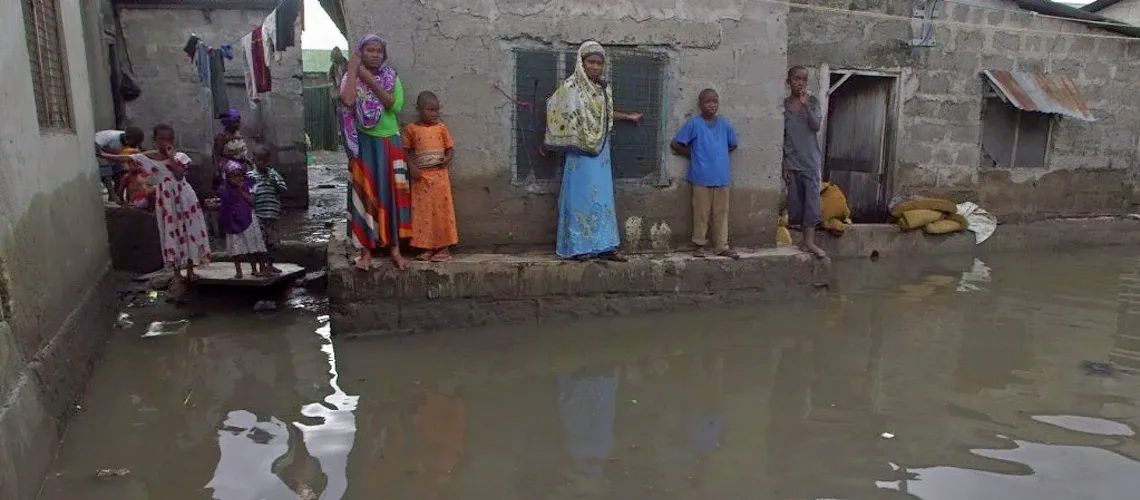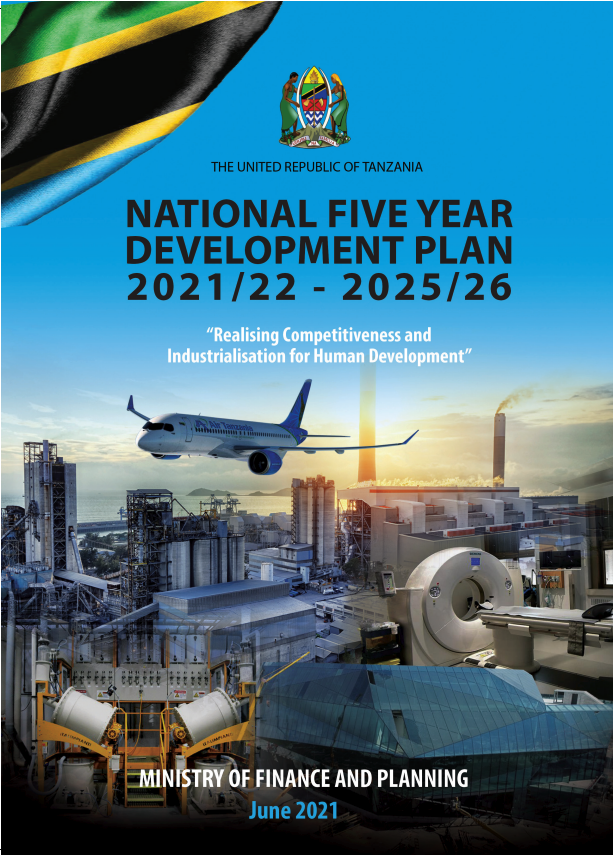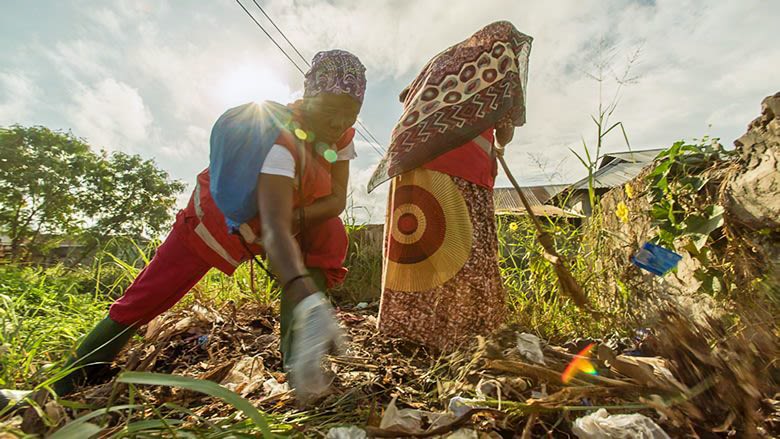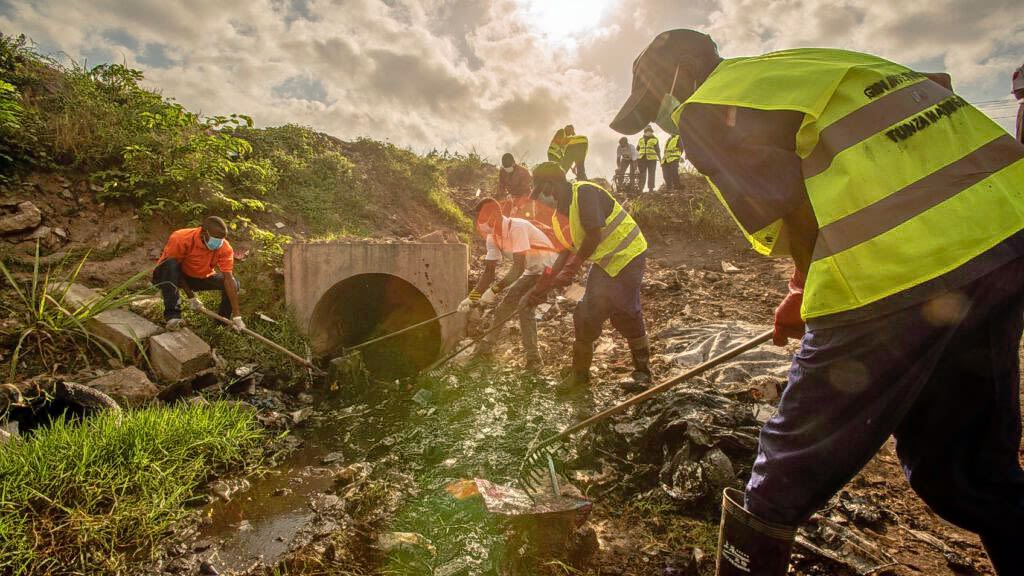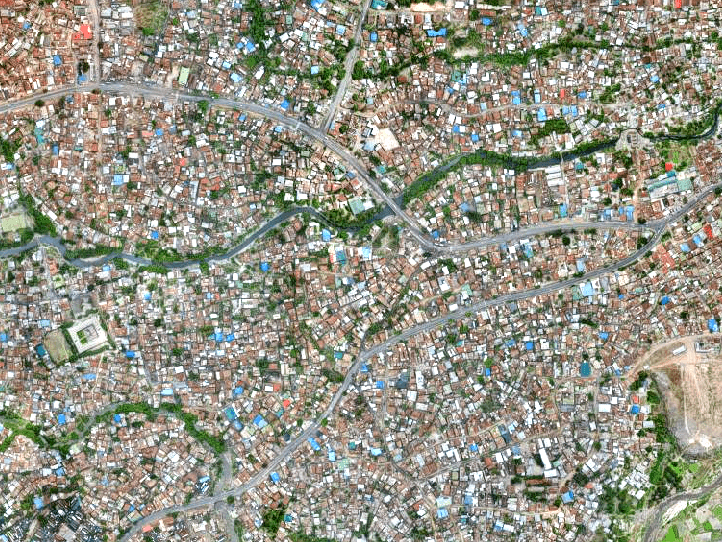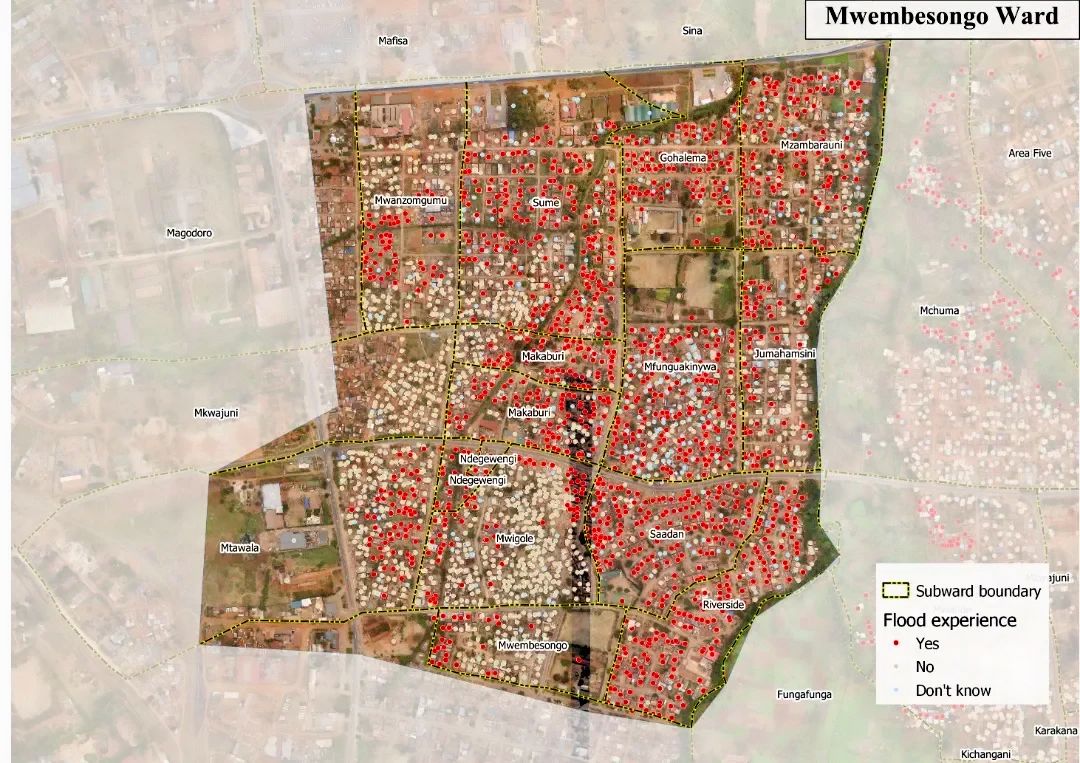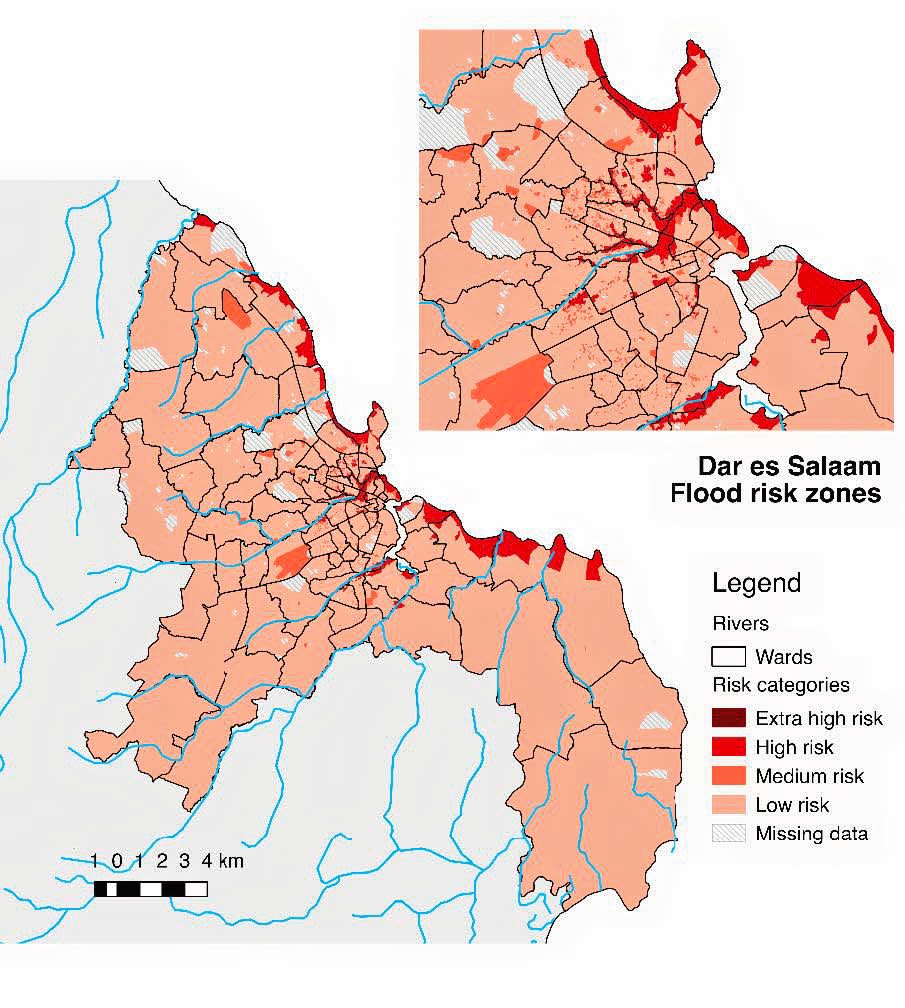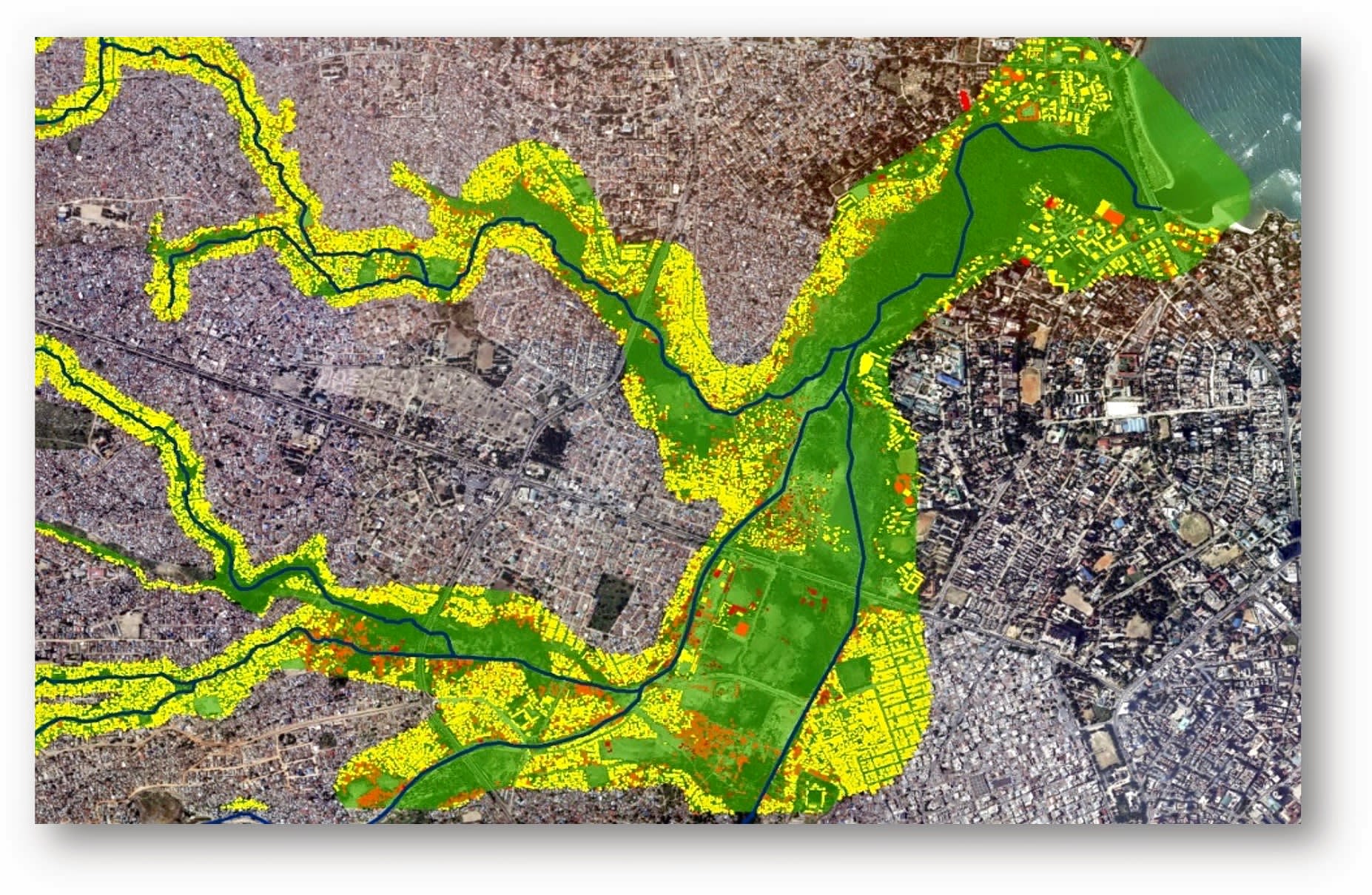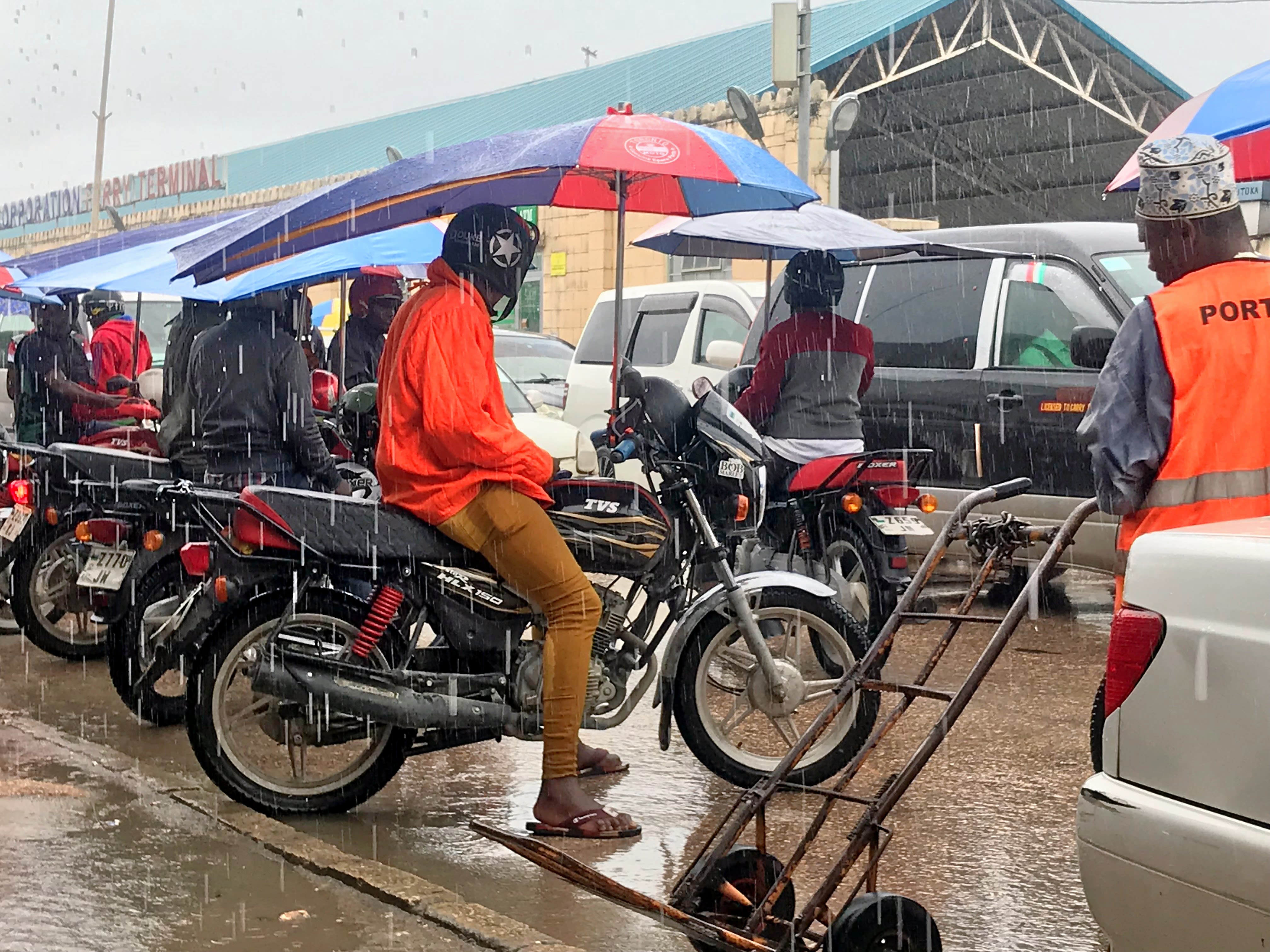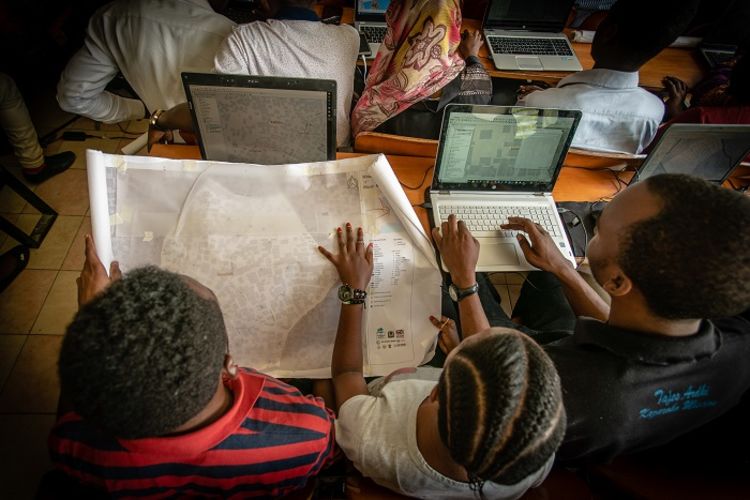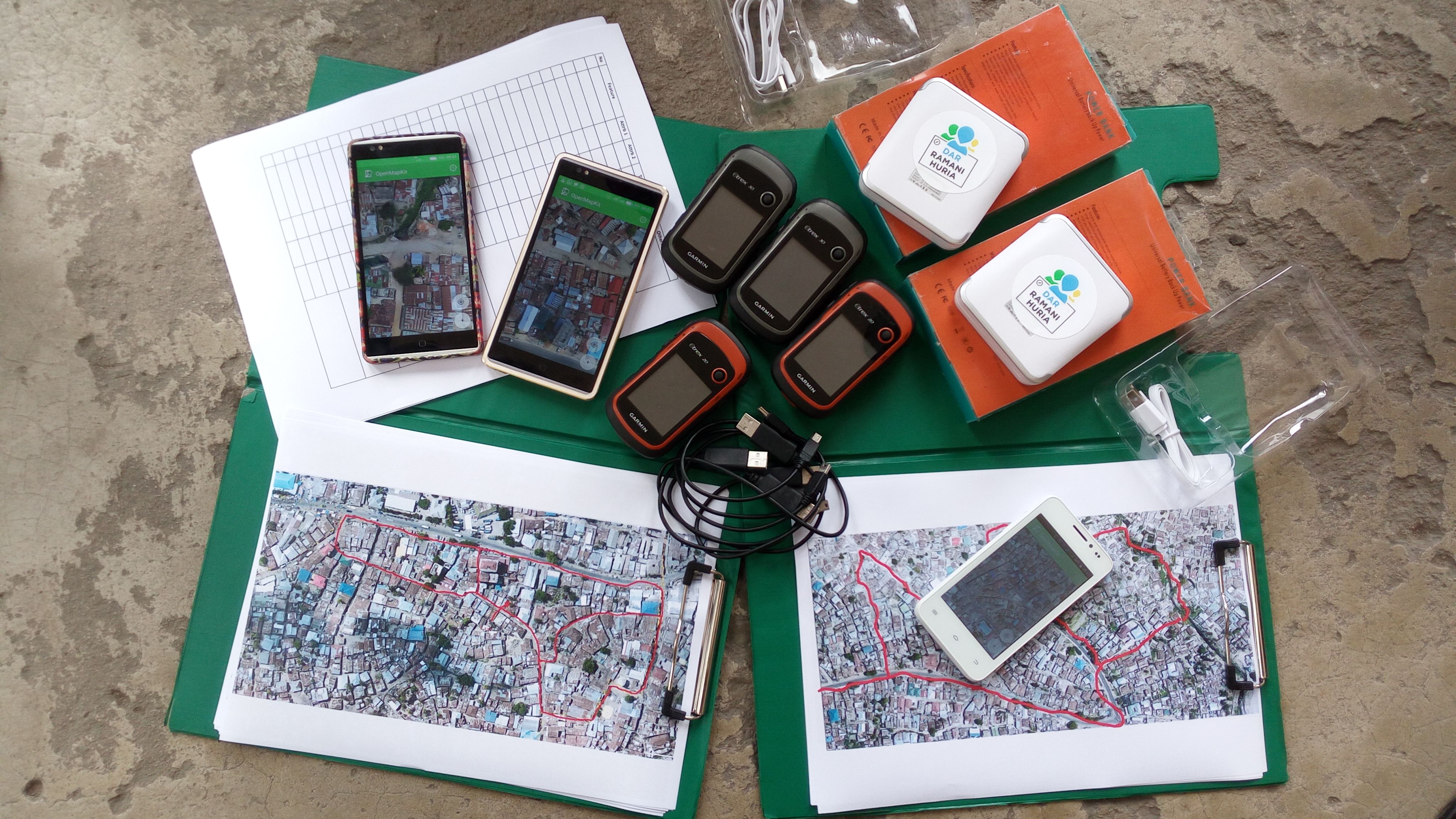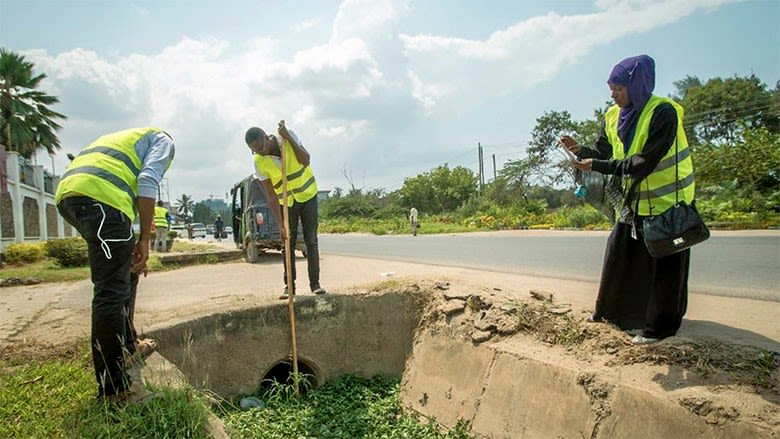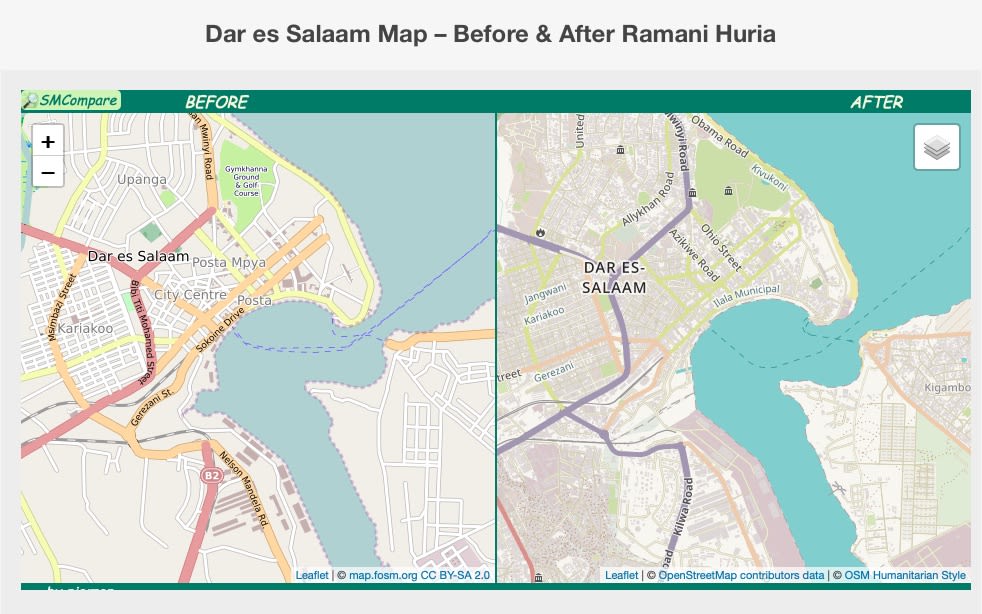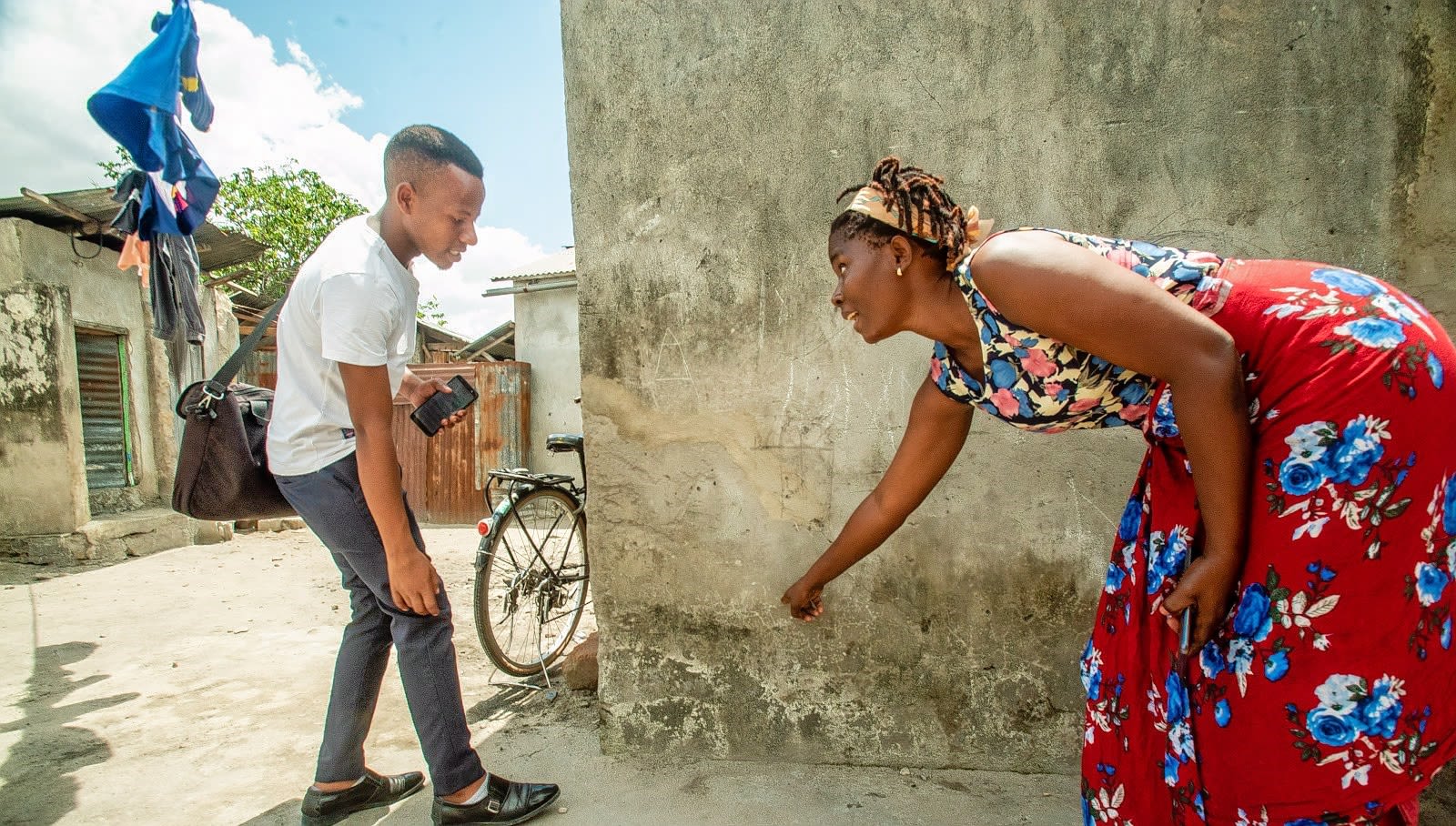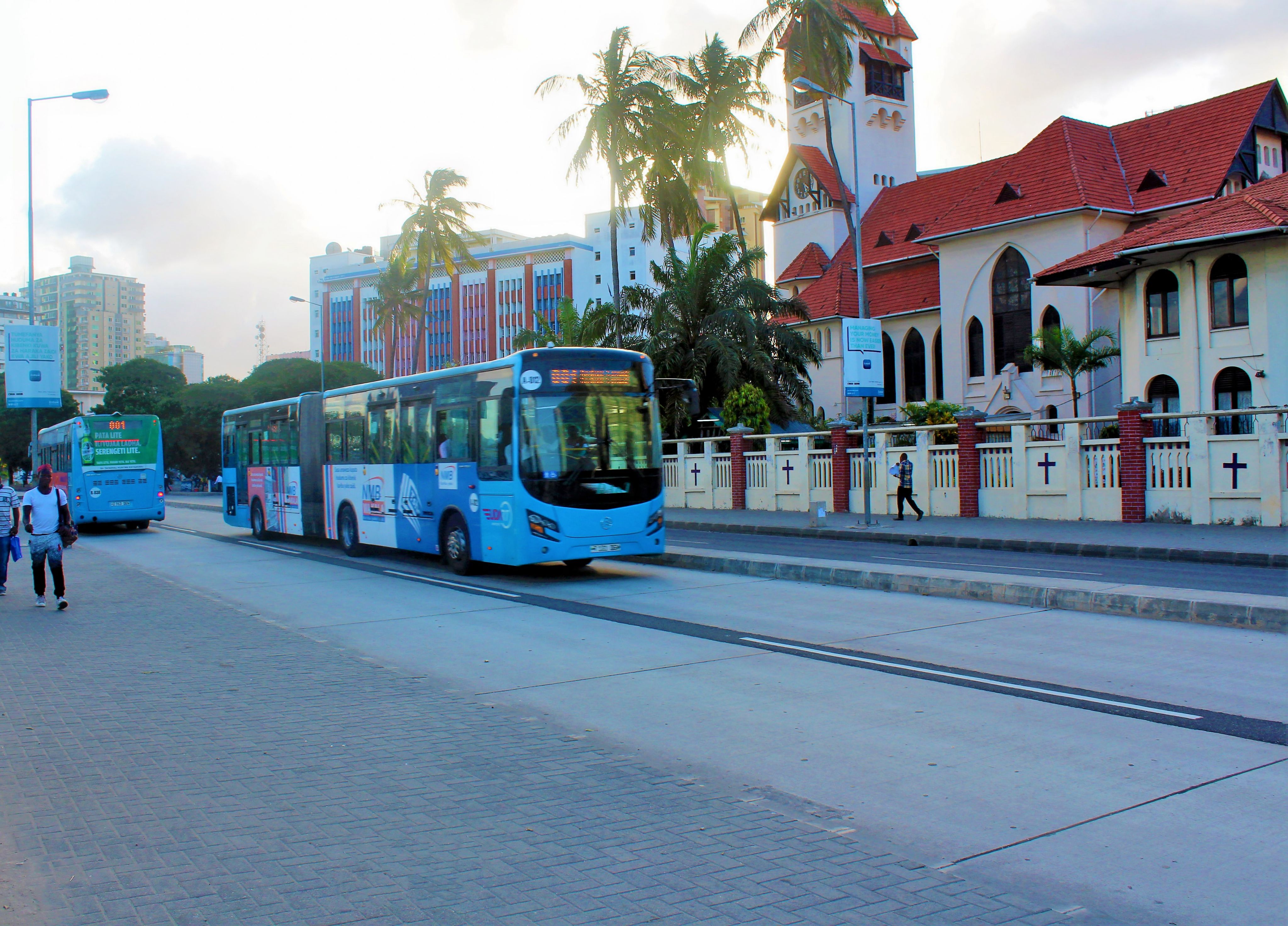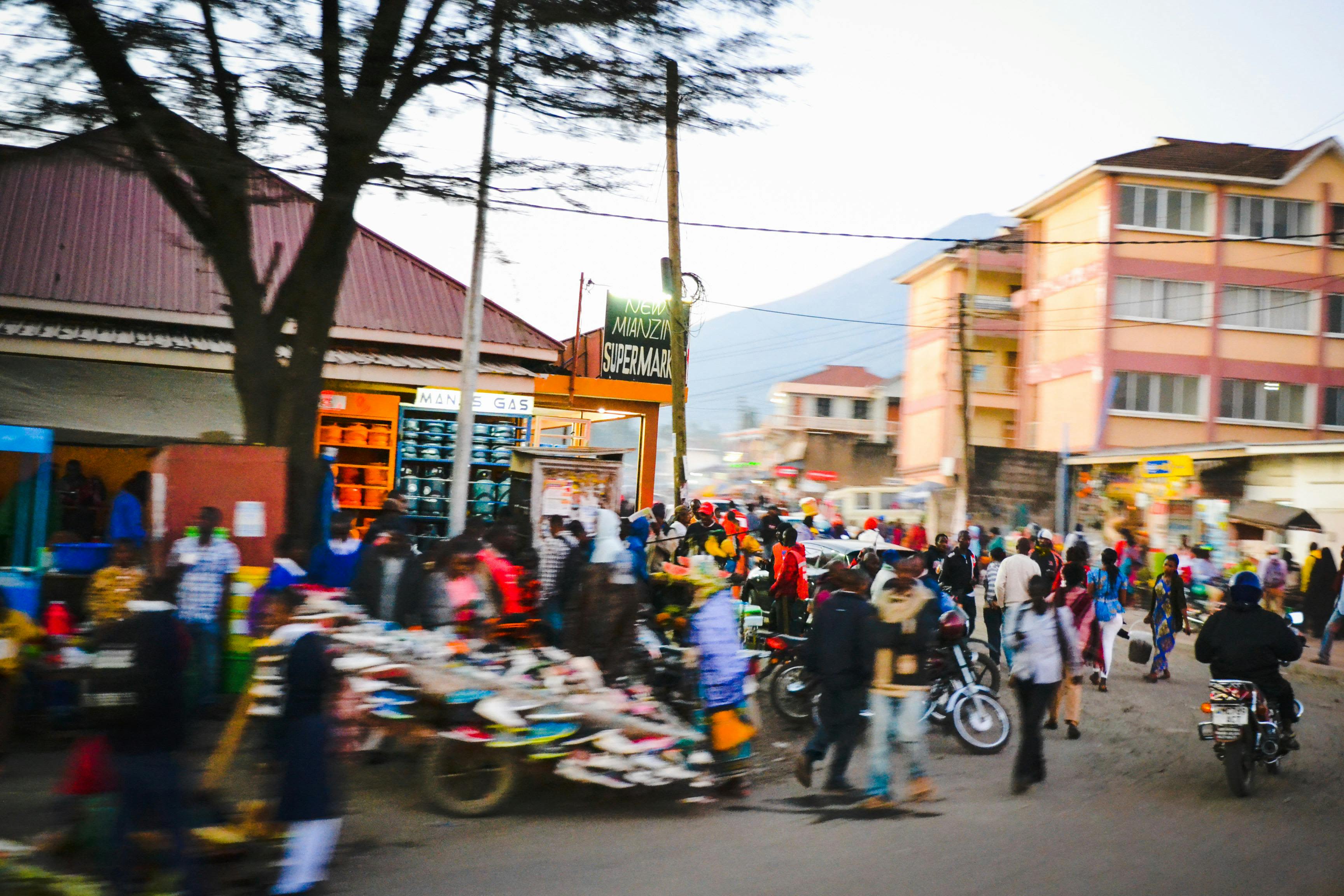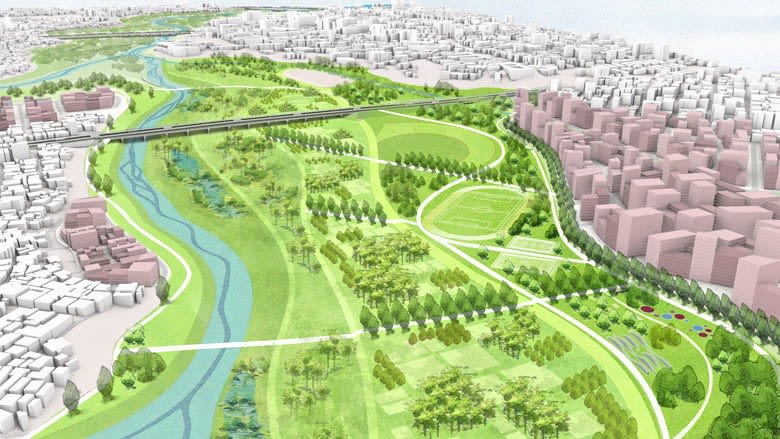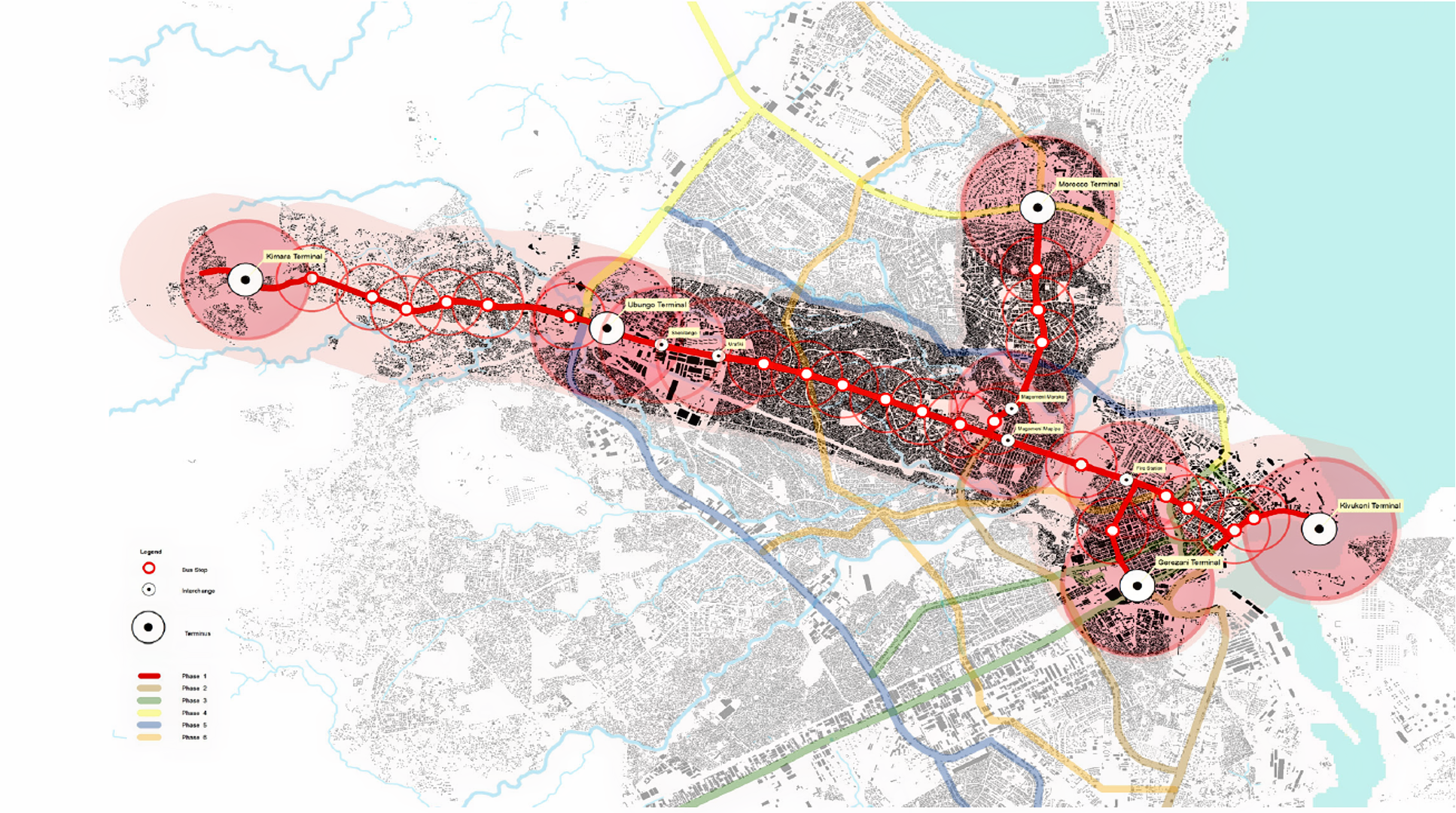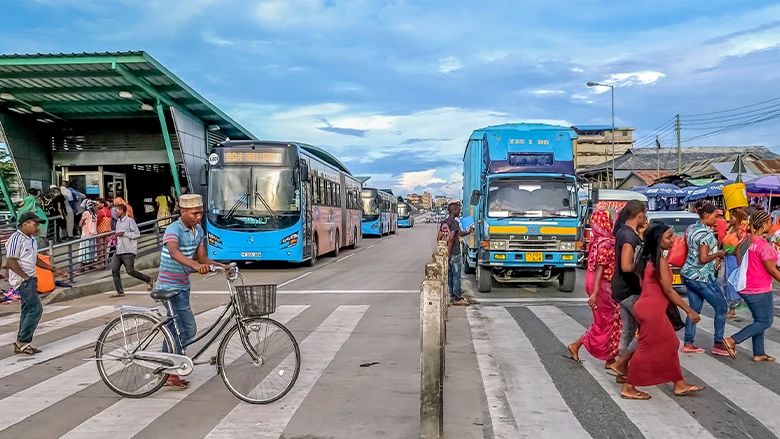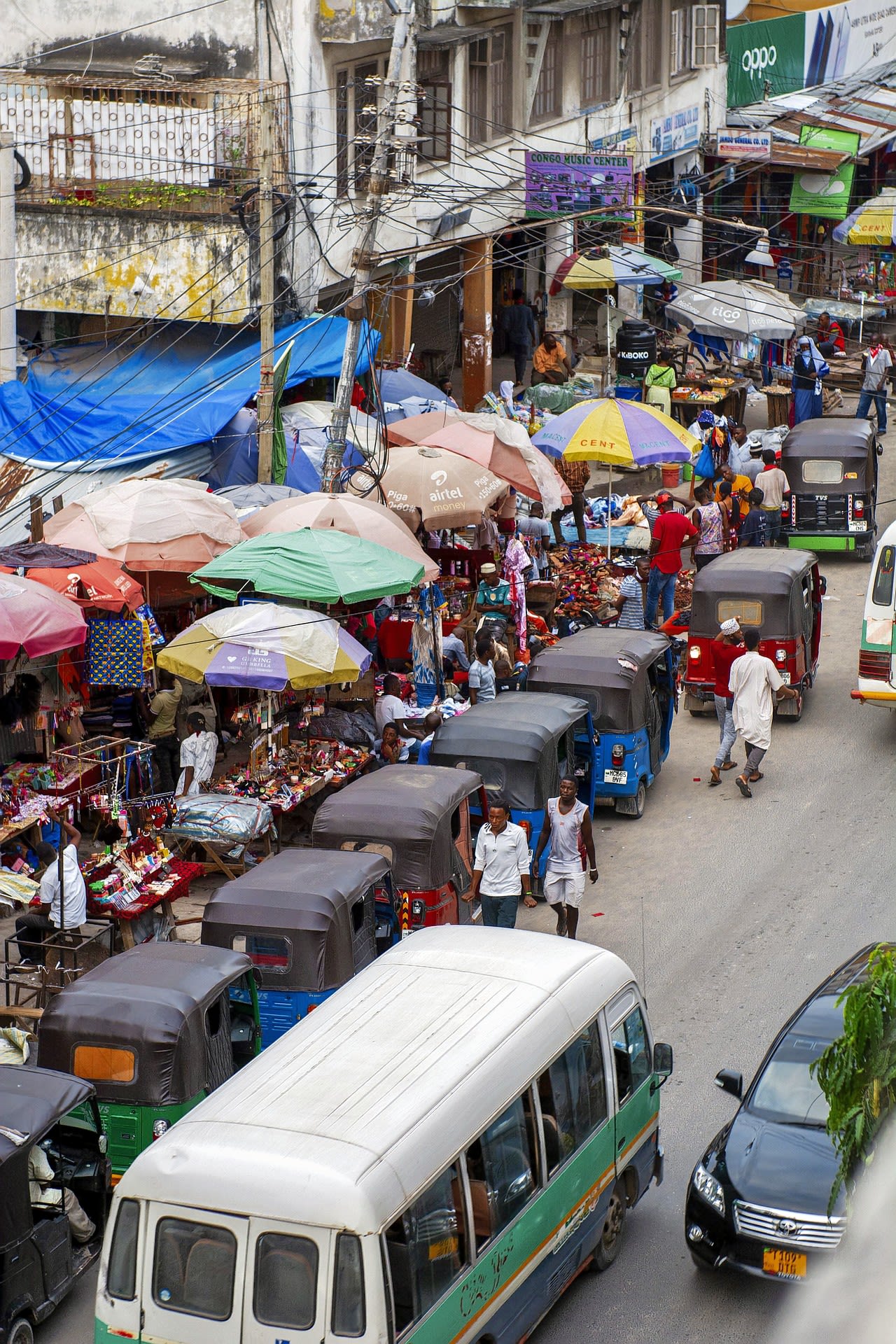A Decade of Partnership
Working Together for a More Resilient Tanzania

- The World Bank and the Global Facility for Disaster Reduction and Recovery (GFDRR), in collaboration with a range of development partners, have worked closely with the Government of Tanzania to deepen the country’s understanding of risk, enable better planning and financing to reduce that risk across sectors, and advance transformative investments for urban resilience.
- Over 4 million people, thus far, have benefitted from $1.7 billion in resilience investments in Tanzania, which have also helped the country advance critical reforms in sectors such as energy, water and health.
- A defining feature of ongoing interventions has been the co-creation of resilience solutions, ensuring that communities are not only consulted, but also play a role in shaping the strategies and investments that affect their future.
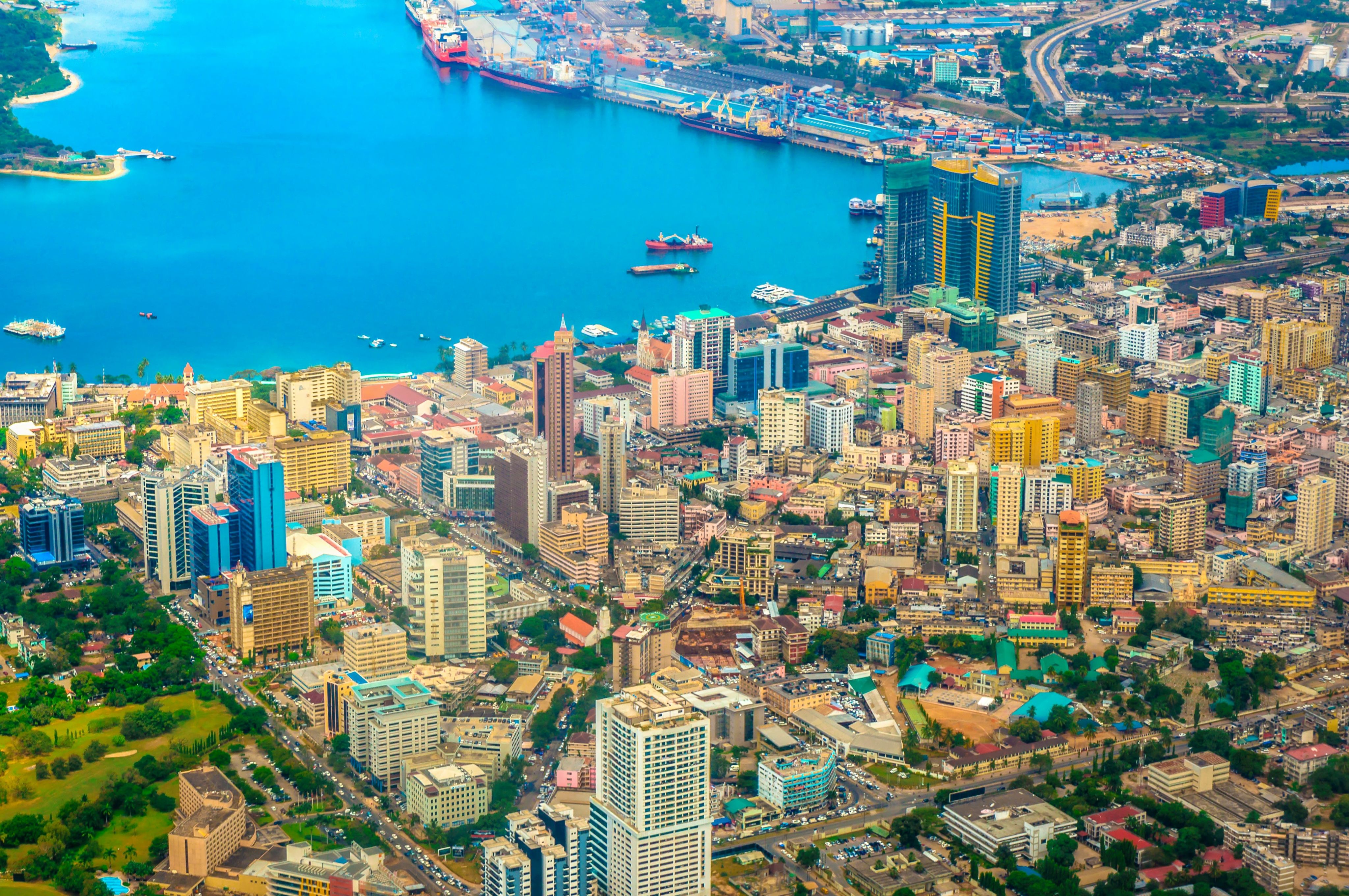
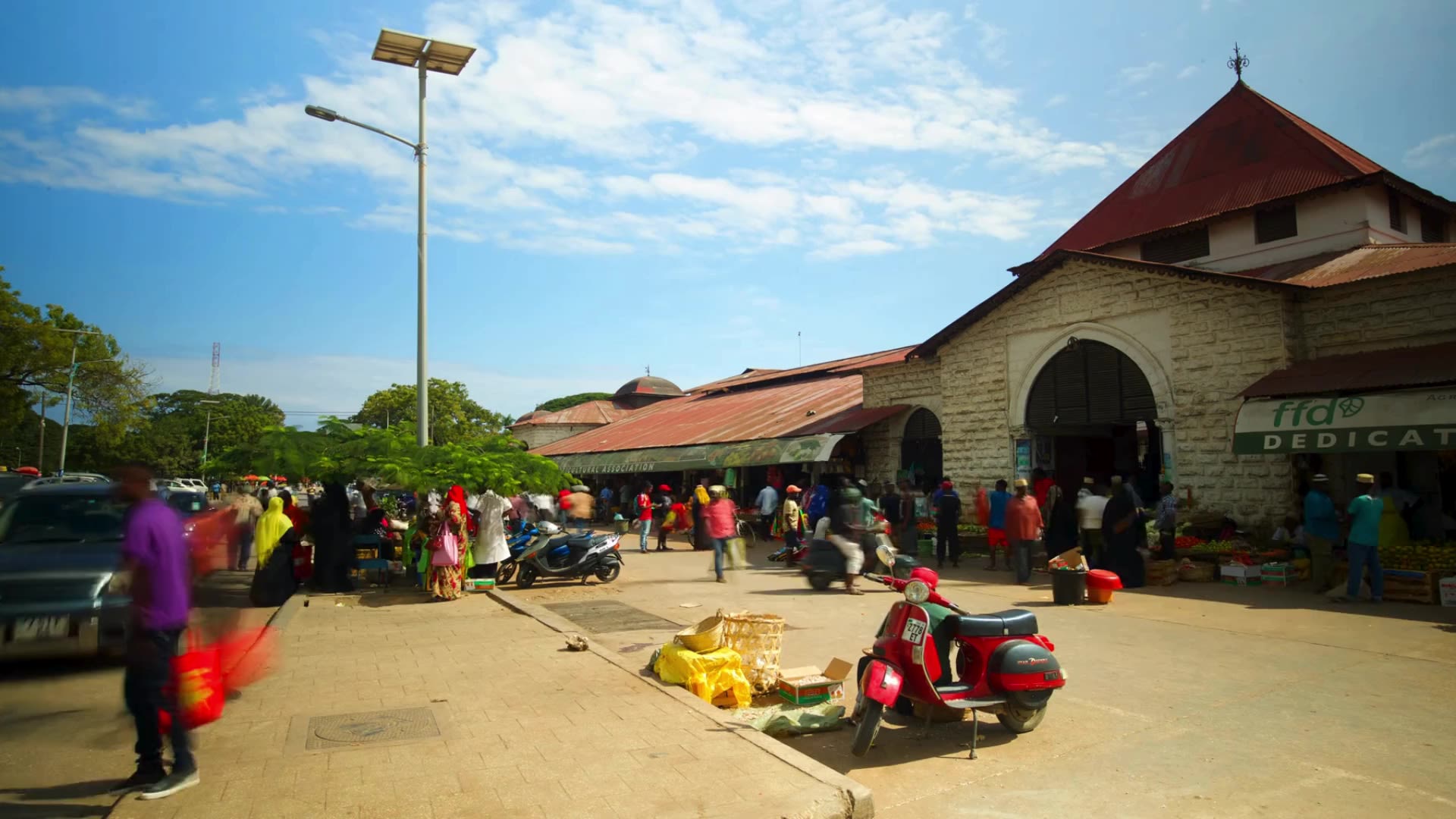
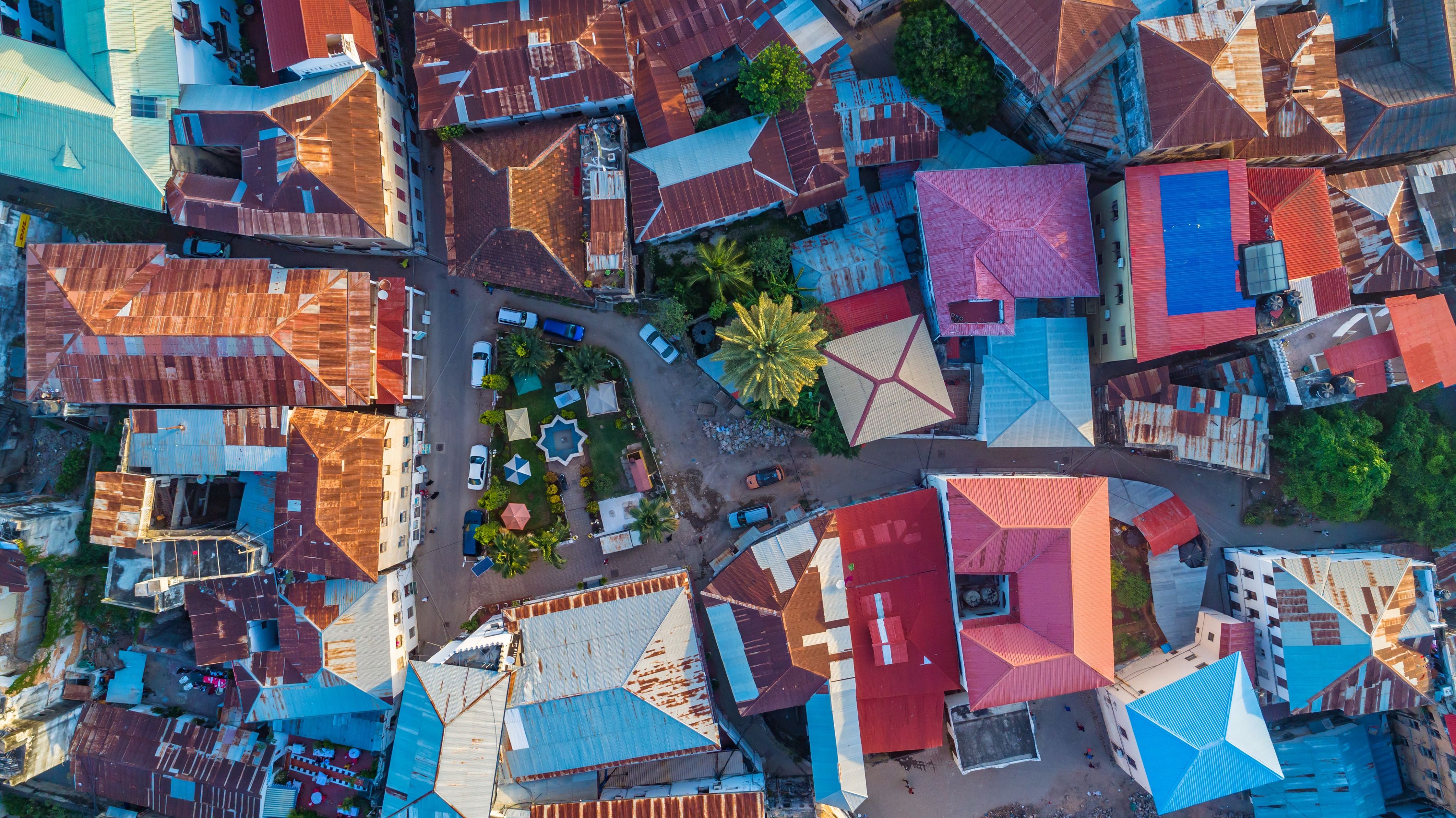
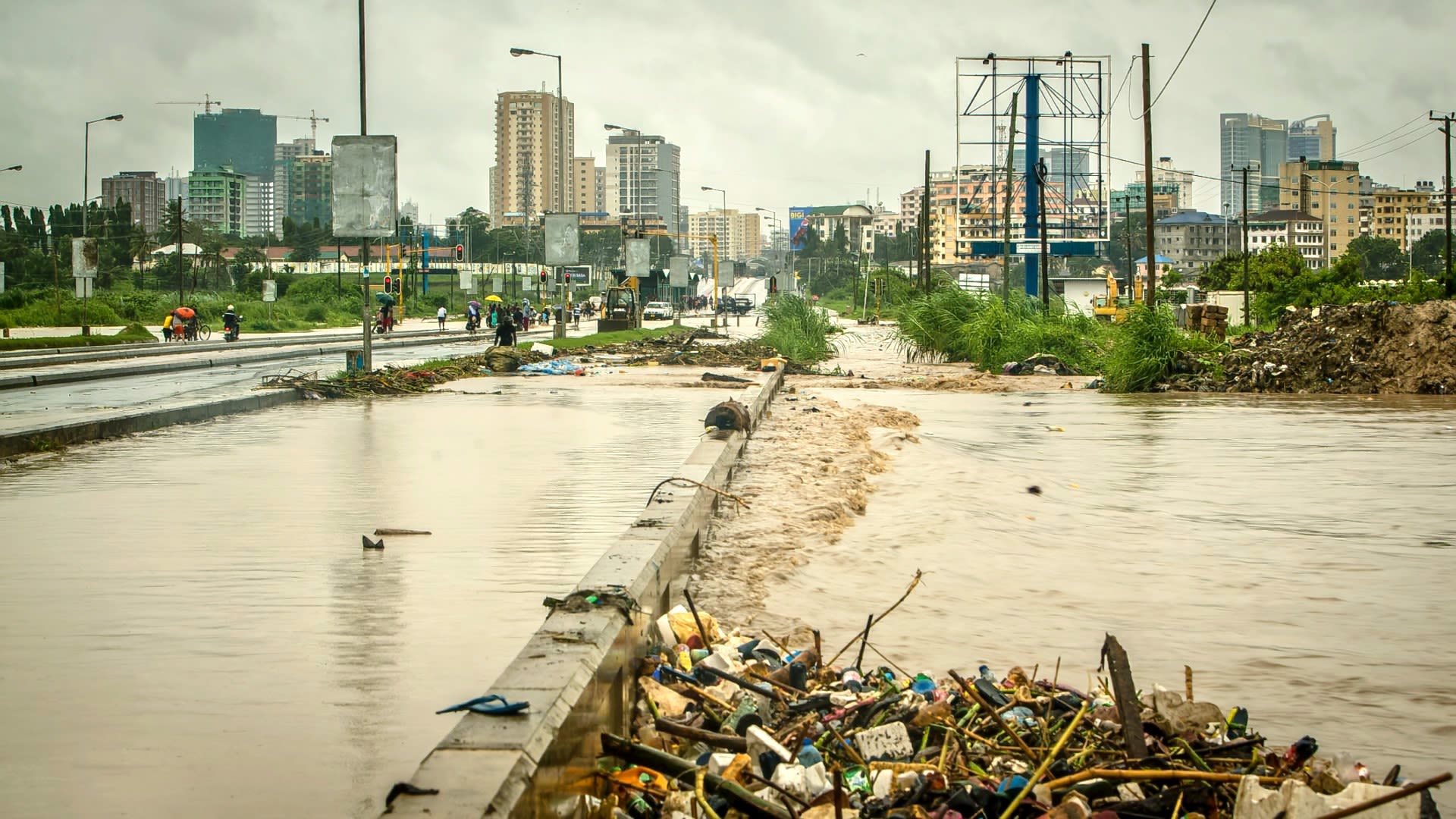
Home to over a third of Tanzania’s population of 62 million people, the country’s fast-growing urban areas are central to driving growth and development.
Cities such as Dar es Salaam, Dodoma, and Mwanza are projected to contribute 60% of GDP by 2030.
More than 50% of Tanzania’s population are expected to live in urban areas by 2050.
There is broad recognition—including by the Government of Tanzania—that realizing the country's full potential, especially in its cities, will require concerted efforts to reduce vulnerability to disasters.
In the past two decades, Tanzania has experienced over 65 major disaster events, with floods and droughts alone causing annual economic losses of $170 million.
Risks from such hazards, particularly in Tanzania’s urban areas, have been amplified by planning and capacity limitations and inadequate infrastructure.
Across Tanzania, settlement areas exposed to high flood risk grew by approximately 120 percent between 1985 and 2015. For example, Dar es Salaam, the country’s business capital and largest population center, is extremely vulnerable to flooding, which is compounded by the fact that four in five residents live in unplanned settlements.
As Tanzania strives to sustain and accelerate its growth trajectory, these challenges threaten to hinder the country’s economic gains.
In 2018, floods in Dar es Salaam cost $100 million or approximately 2% of the city’s gross domestic product. The realities of a changing climate are only exacerbating these challenges. Climate impacts to Tanzania’s transport infrastructure, for instance, currently cost $108–109 million each year and could rise to $198–233 million by 2050 under a business-as-usual scenario.
Local residents wait for waters to subside in Dar es Salaam, Tanzania.
Local residents wait for waters to subside in Dar es Salaam, Tanzania.
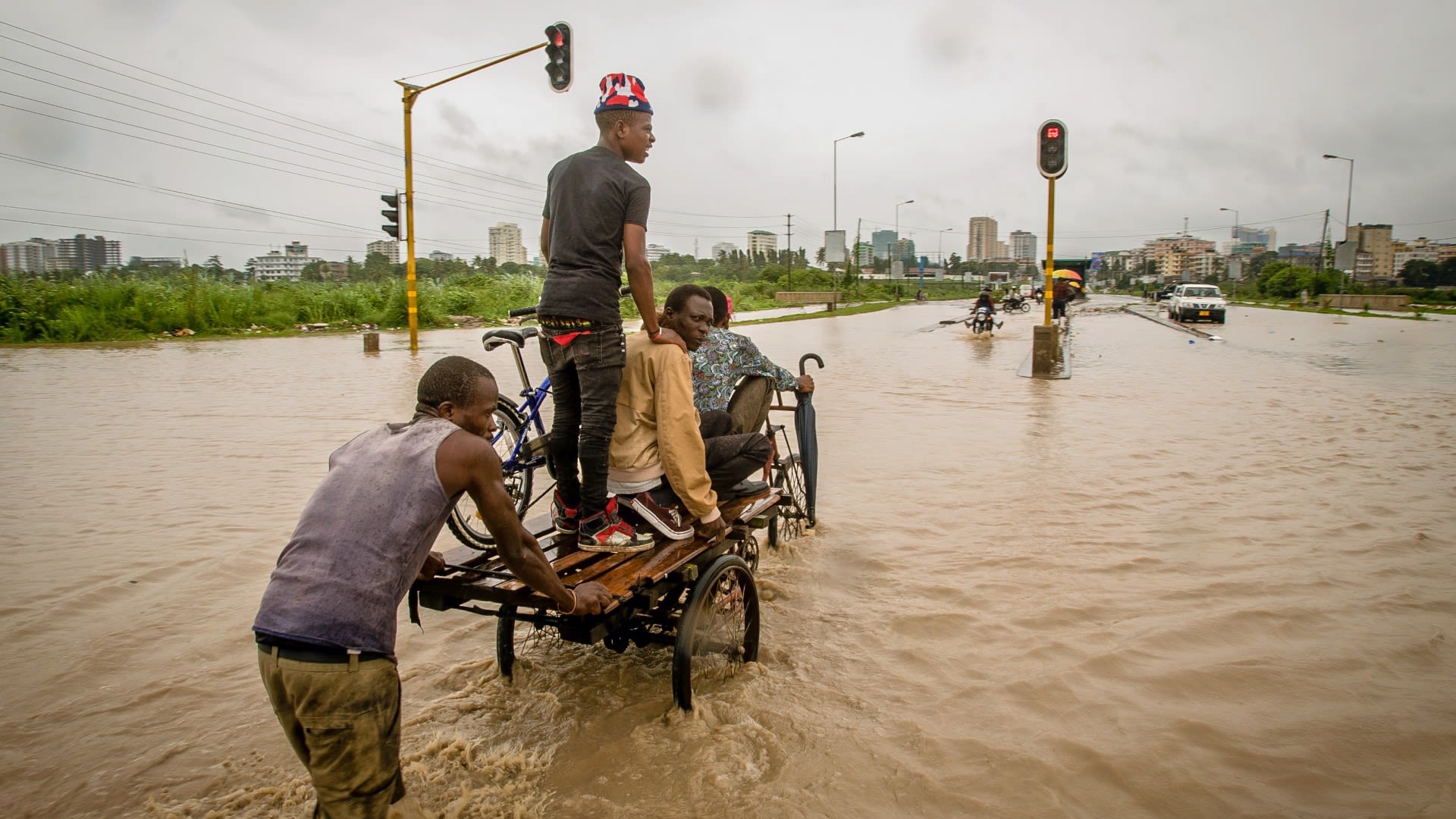
Against this backdrop, the Government of Tanzania has stepped up efforts to develop solutions that usher in a more disaster-resilient future for its cities.
Tanzania has underscored its commitment to disaster risk reduction as a top priority in its National Five-Year Development Plan (2021-26).

The World Bank and GFDRR remain steadfast partners in these efforts.
Spanning more than a decade, this partnership with Tanzania has deepened the country's understanding of disaster risk, enabled better planning to reduce that risk, informed transformative investments for urban resilience, and strengthened policy and institutional frameworks for disaster risk management and financing.
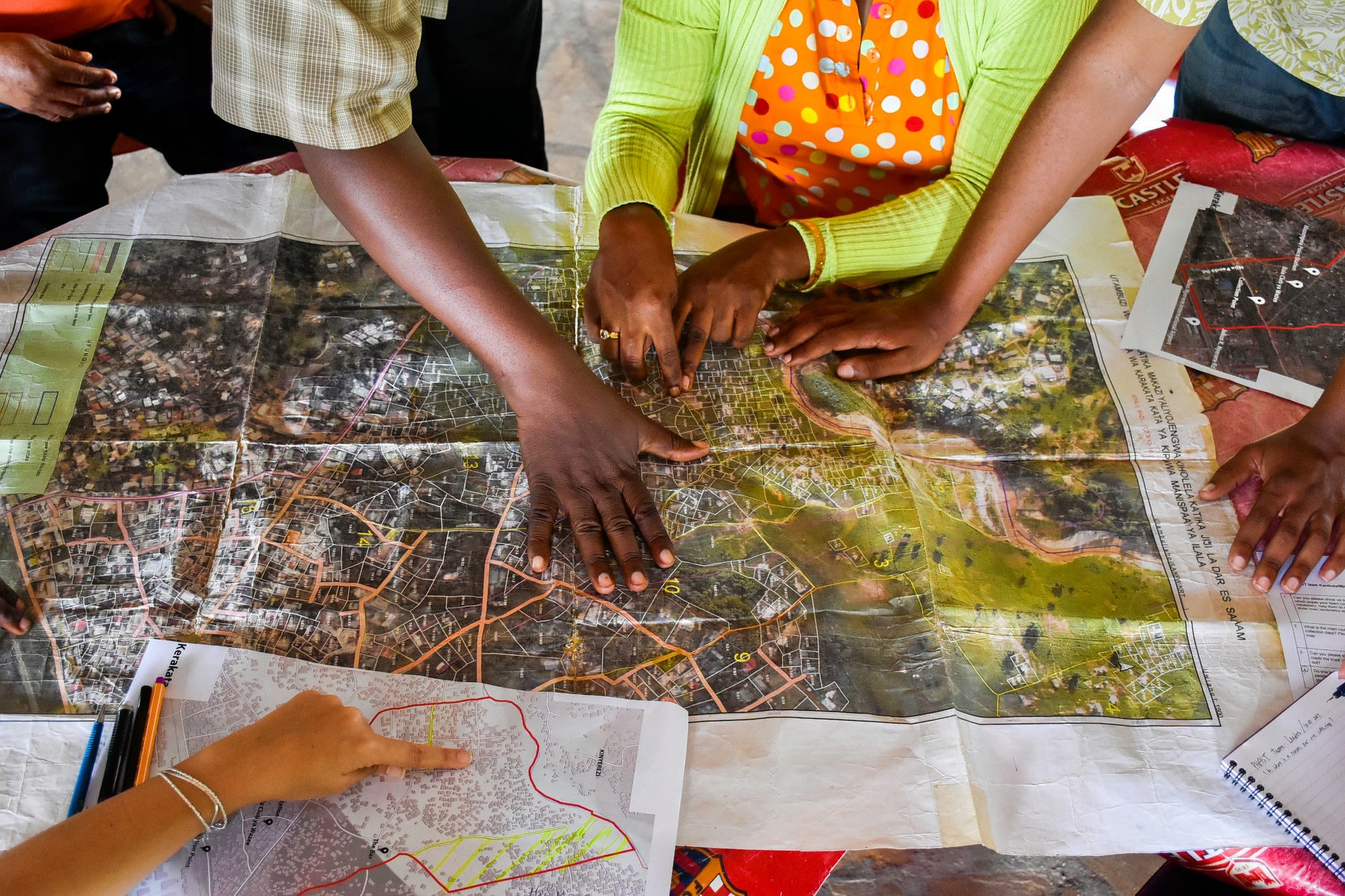

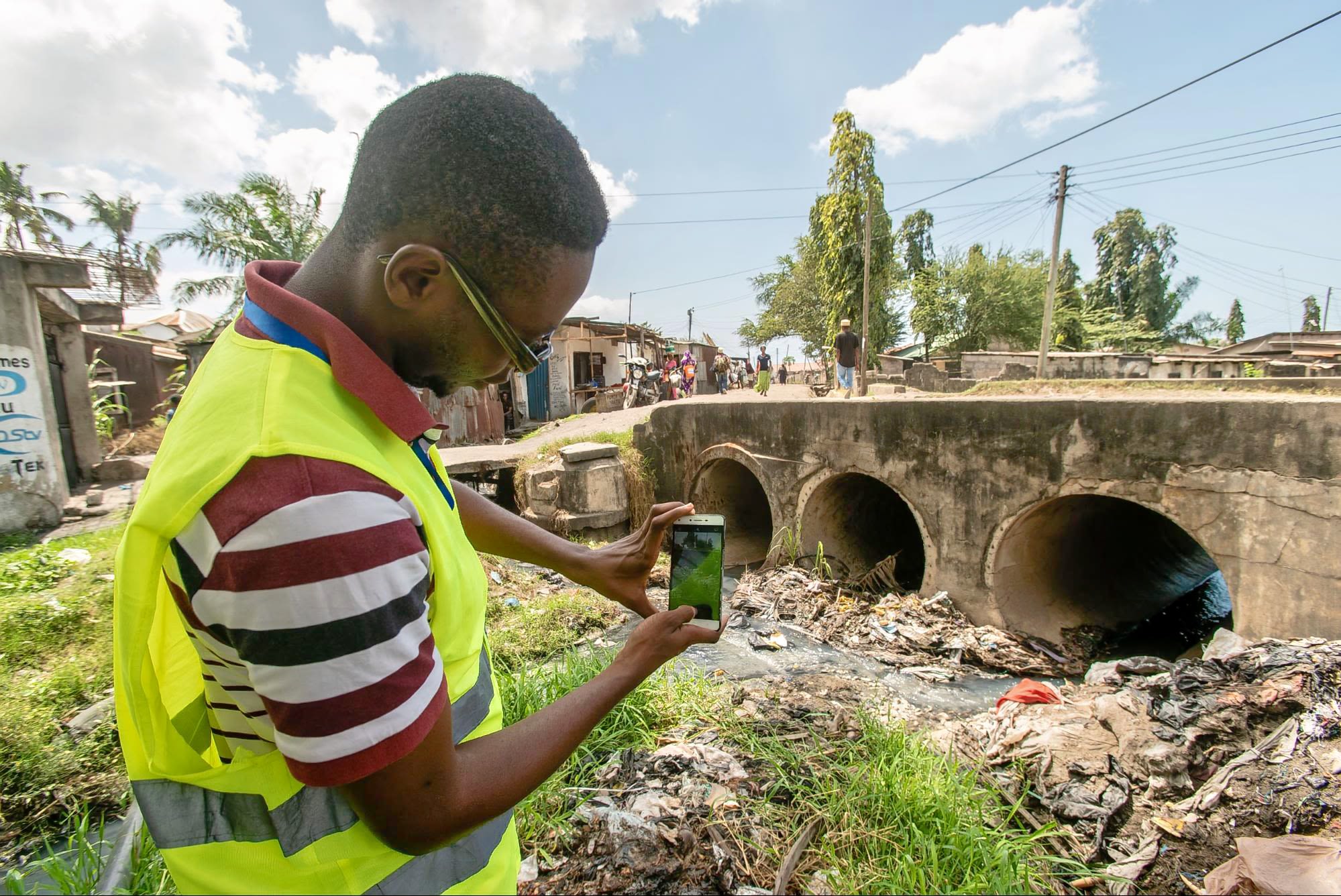
Ahead of the GFDRR Partnership Days in Tanzania (June 24-27, 2025), we take a closer look at the major highlights of this partnership and at complementary efforts by other development partners and initiatives.
The Tanzania Urban Resilience Program (TURP), a multi-year (2016-2022) technical assistance program funded by the United Kingdom's Foreign, Commonwealth and Development Office, stands out as a key contributor.
The Japan-World Bank Program for Mainstreaming Disaster Risk Management (DRM) in Developing Countries (Japan Program) has also played a significant role. The ACP-EU Natural Disaster Risk Reduction Program, a joint initiative of the African, Caribbean and Pacific (ACP) Group of States, the European Union, the World Bank and GFDRR, provided additional support.
Generating Tools and Analytics
for Understanding Disaster Risk
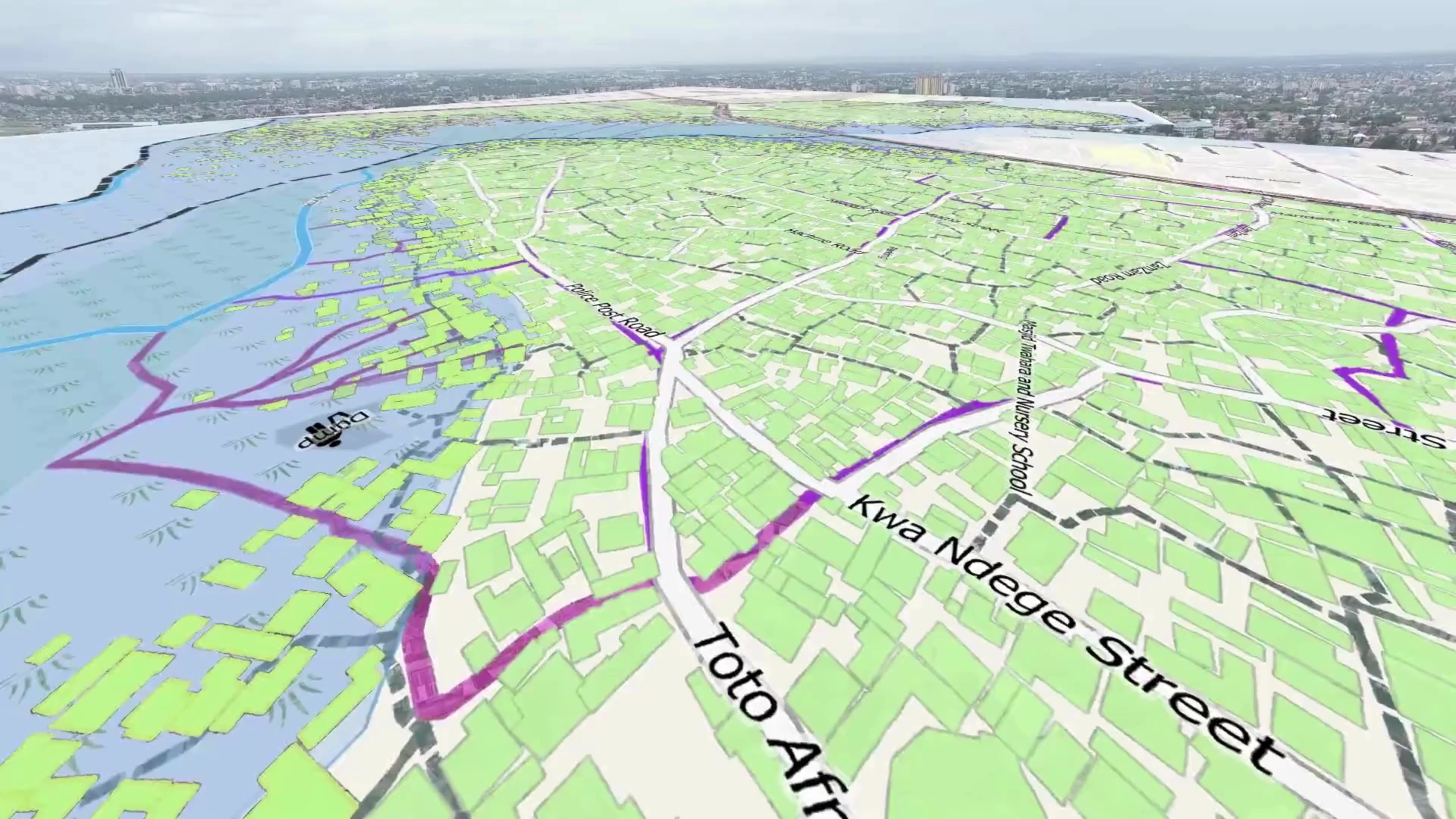
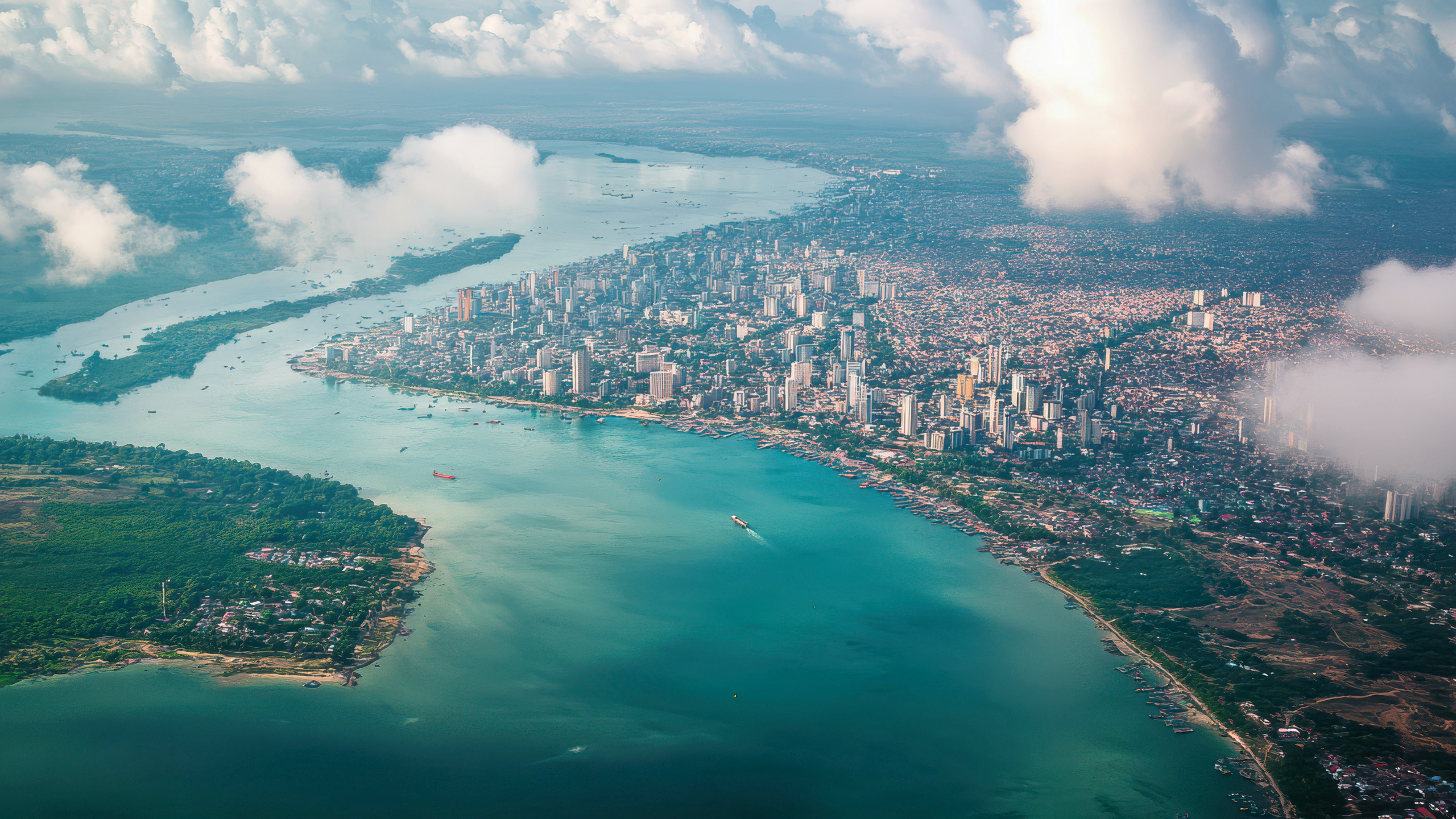
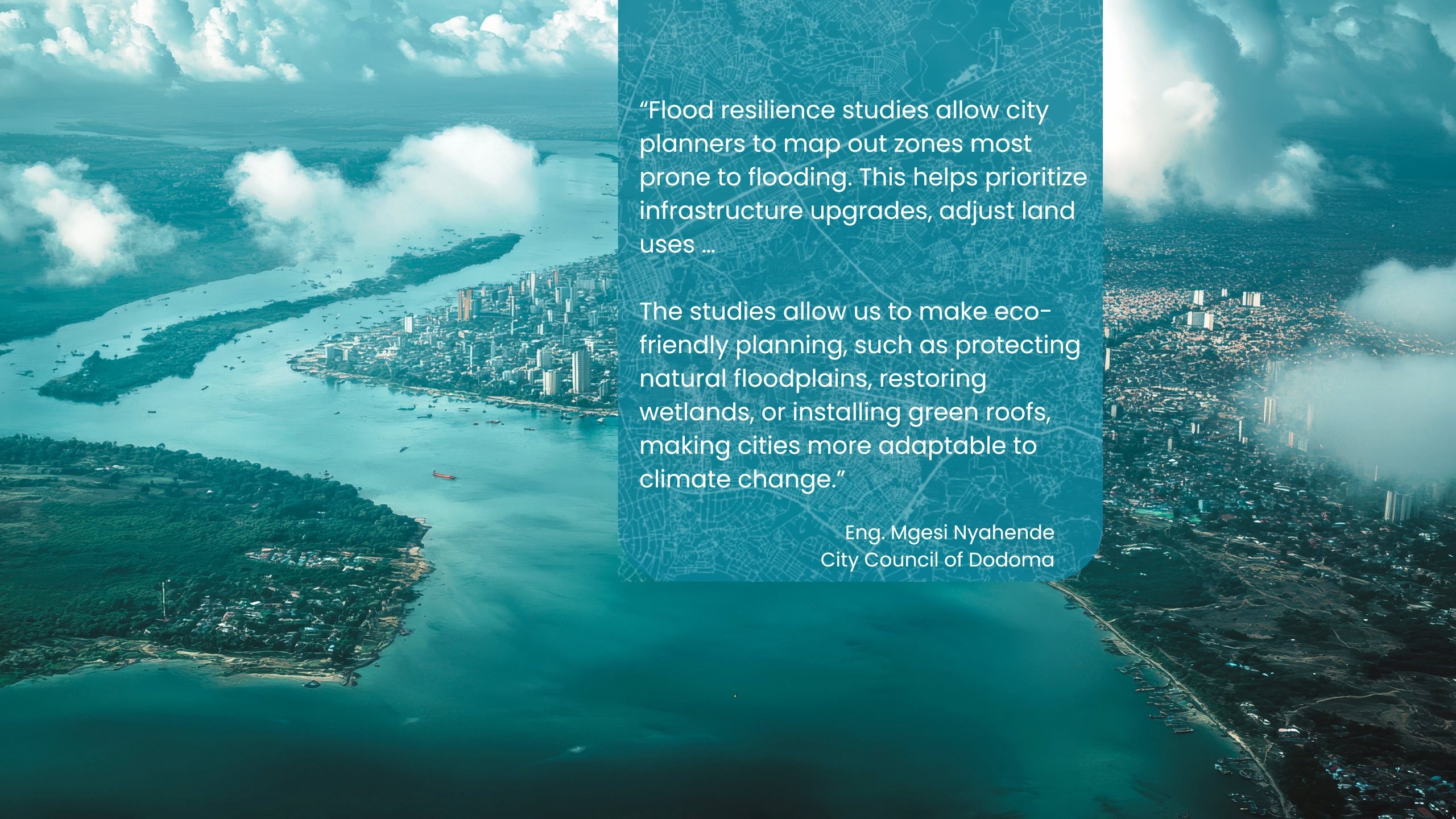
GFDRR, including through the City Resilience Program (CRP), has supported climate and disaster risk assessments in the Msimbazi Basin in Dar es Salaam. Taking a deep dive into the economic impacts of flooding, those assessments revealed, for example, that floods disproportionately affect areas with high employment densities.
Through the Japan Program, GFDRR has supported a comprehensive resilience assessment of urban transport networks in Dodoma and Arusha to inform planning and investments to better manage flood risk. By using flood hazard modeling, transport network analysis, and other methods, the assessment found that 10.5% of Dodoma's road network would likely be affected by an extreme flood event, and identified the five wards with the highest concentration of risk.
Recent GFDRR-supported analytical work has also included city resilience diagnostics and hazard risk assessments for 12 cities. In Dar es Salaam, GFDRR has also supported a water sector resilience and drought preparedness assessment and stocktaking of infrastructure design and construction designs and standards. At the national level, a comprehensive review of the government’s disaster risk management and climate resilience policies was conducted.
These initiatives complemented work supported by TURP, including development of a probabilistic flood model for Dar es Salaam. That model, which has been used by at least five Tanzanian government agencies, has quantified flood hazards from pluvial, fluvial, and tidal sources and also helped estimate potential losses under varying climate change and urban development scenarios.
Informal settlement in Dar es Salaam. Photo: drone image by Frederick Mbuya, UhuruLabs.
Informal settlement in Dar es Salaam. Photo: drone image by Frederick Mbuya, UhuruLabs.
A map showing community responses on flood experience, Mwembesongo ward, Morogoro, Dar es Salaam. Photo: Ramani Huria
A map showing community responses on flood experience, Mwembesongo ward, Morogoro, Dar es Salaam. Photo: Ramani Huria
Map of Dar es Salaam with zones categorized according to flood risk categories.
Map of Dar es Salaam with zones categorized according to flood risk categories.
Dar es Salaam’s flooding situation exemplifies how environmental degradation and climate vulnerability can drain the city economy, impact infrastructure, and disproportionately burden the poor.
Dar es Salaam’s flooding situation exemplifies how environmental degradation and climate vulnerability can drain the city economy, impact infrastructure, and disproportionately burden the poor.
Co-creating Resilience Solutions
with Local Communities
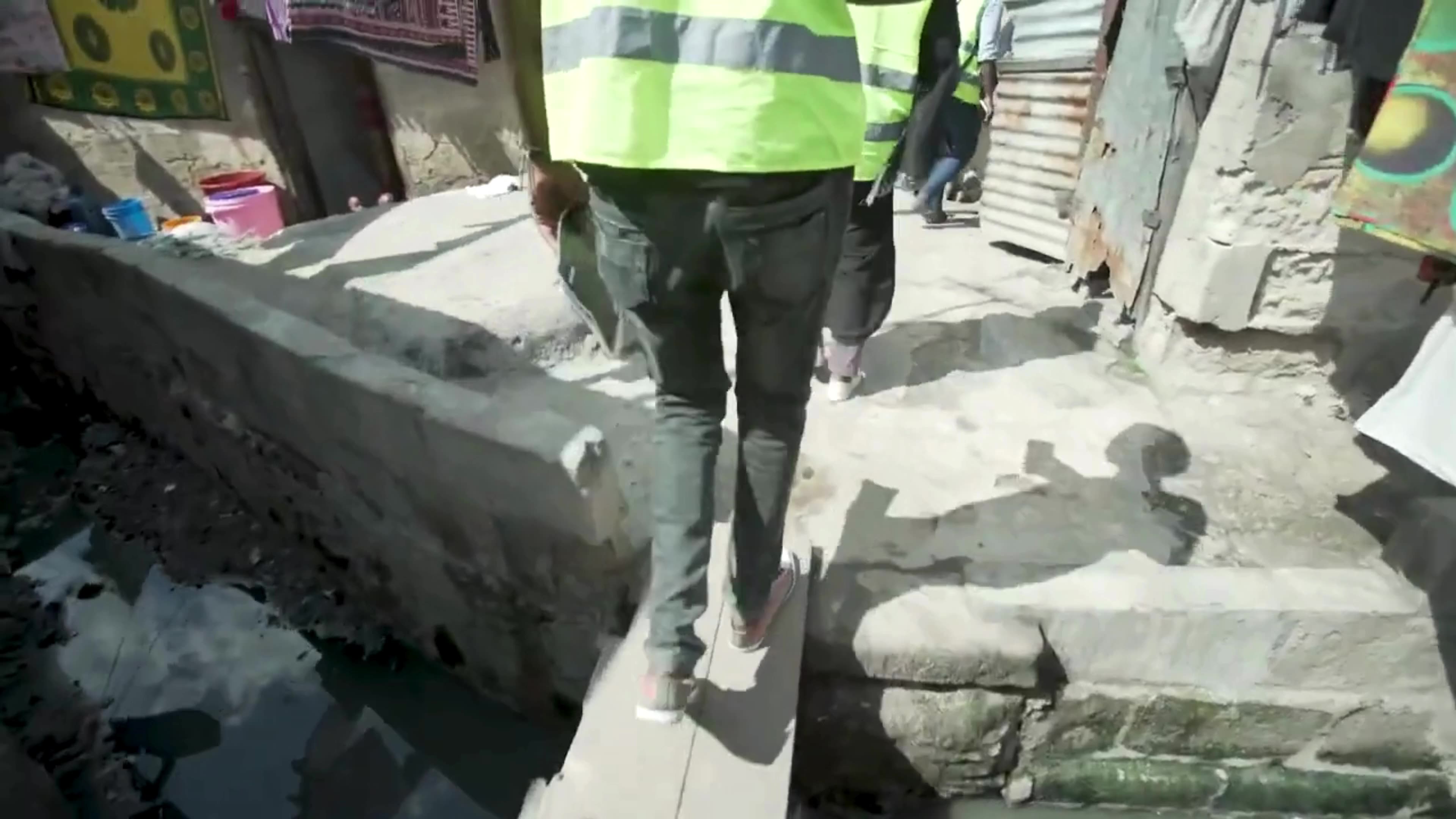
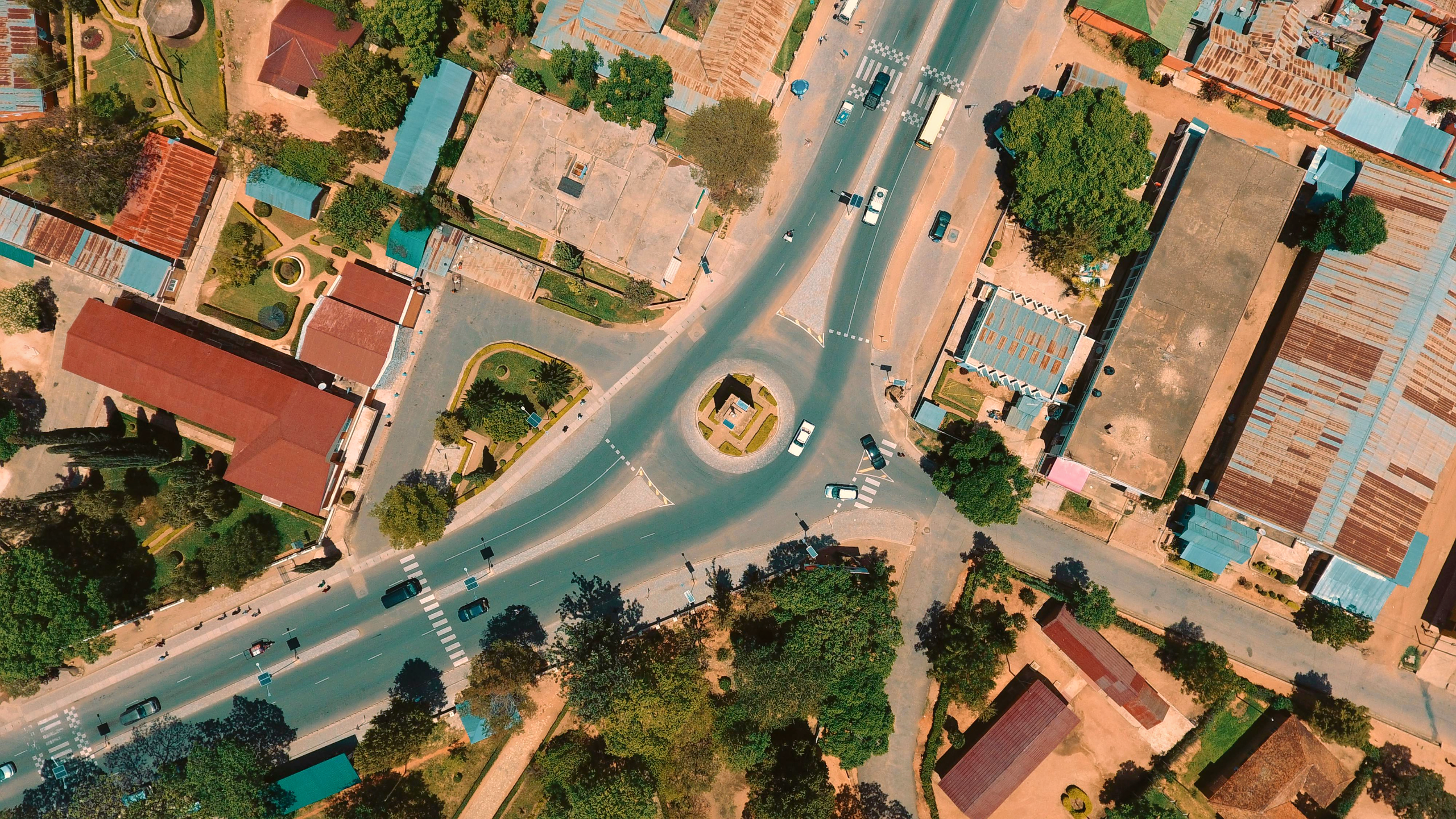
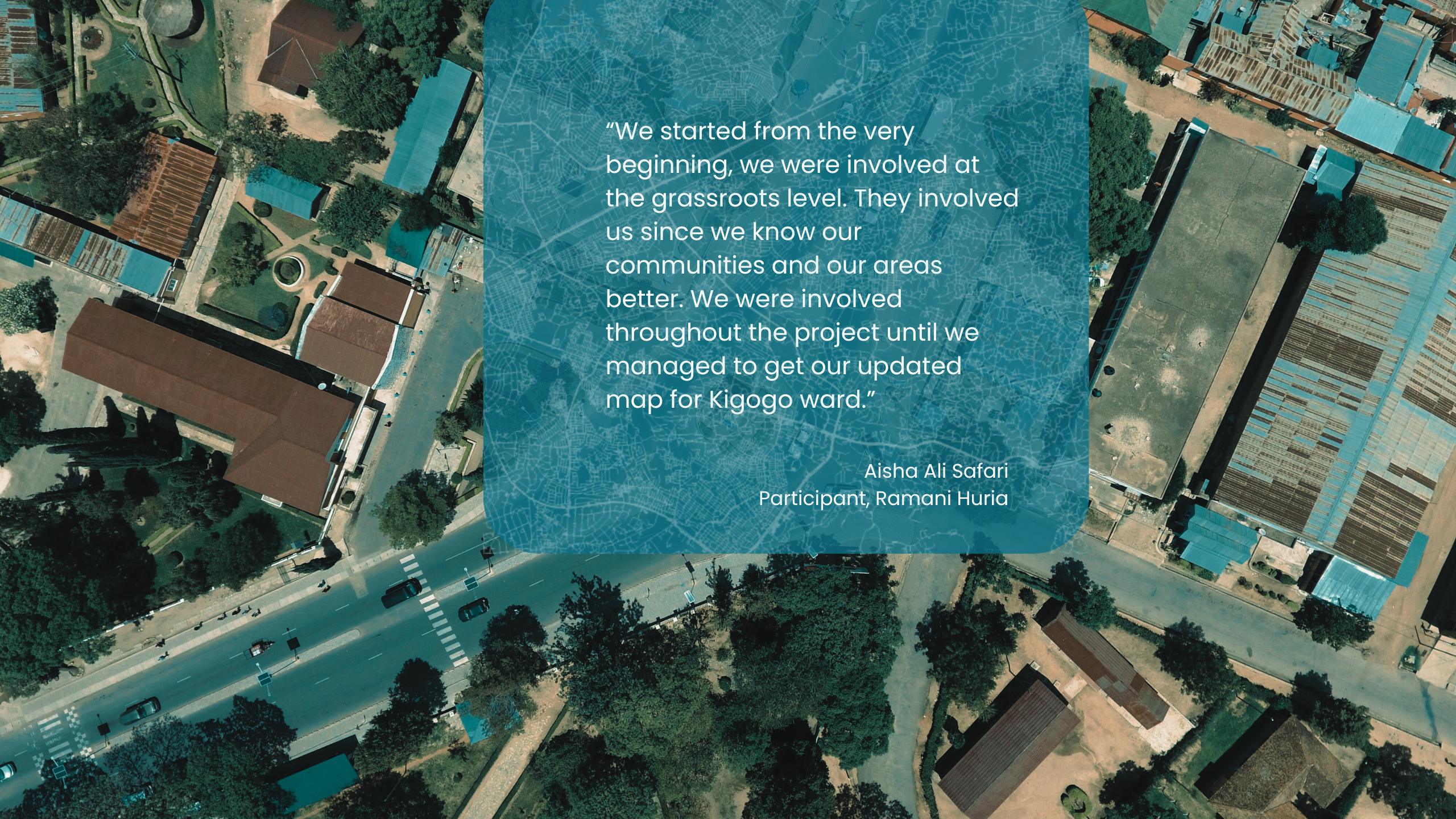
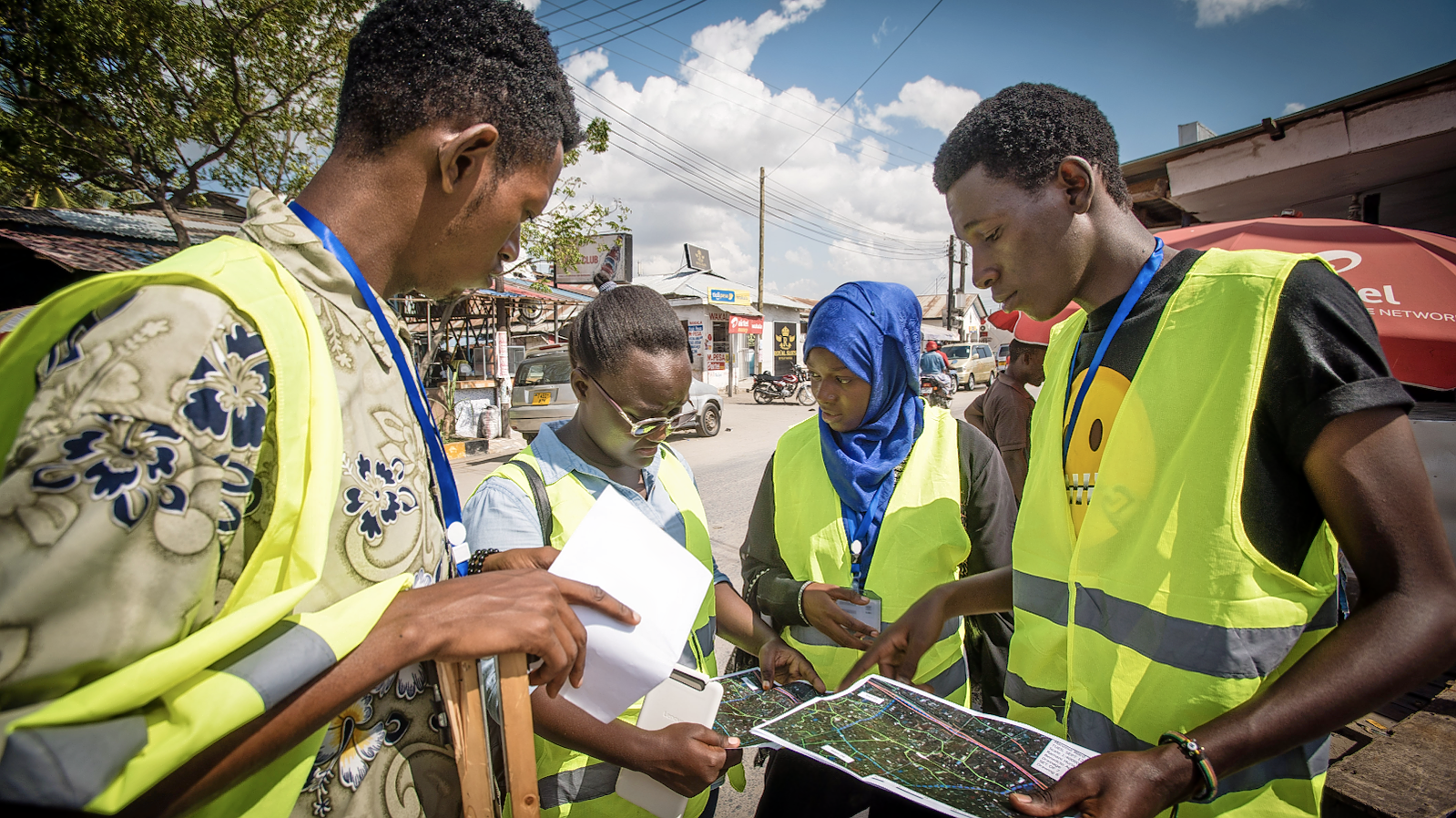
GFDRR supported the Ramani Huria initiative, a community-mapping project that trained university students and local community members to create open-source maps of Dar es Salaam's most flood-prone areas.
Using aerial and street-level imagery, GPS-enabled mobile apps, and drones, Ramani Huria mapped 29 wards (home to 1.3 million citizens) and 1,254 kilometers of waterways and 3,396 kilometers of roads. These maps provide valuable information about likely flood risk in vulnerable neighborhoods and reflect the knowledge of those most directly affected.
A map of Dar es Salaam before (left) and after (right) prepared by Ramani Huria, a drone mapping project done in collaboration with africanDRONE, local communities, and journalists funded by the World Bank and Tanzanian government. Photo: GIJN
A map of Dar es Salaam before (left) and after (right) prepared by Ramani Huria, a drone mapping project done in collaboration with africanDRONE, local communities, and journalists funded by the World Bank and Tanzanian government. Photo: GIJN
Building on this inclusive and participatory model to resilience-building, TURP supported the Resilience Academy, which was first launched in 2019, and has since enabled 1,400 young Tanzanians to develop skills in data collection, community engagement, and mapping.
Young Tanzanians discuss how extensive recent flood events were in their neighborhood. Photo: Chris Morgan/World Bank.
Young Tanzanians discuss how extensive recent flood events were in their neighborhood. Photo: Chris Morgan/World Bank.
Subsequently, a GFDRR-funded pilot supported Resilience Academy participants to produce detailed tree-cover maps of Dar es Salaam. Those maps have helped urban planners identify inequities in canopy coverage across the city.
Enabling Transformative Investments
in Urban Resilience
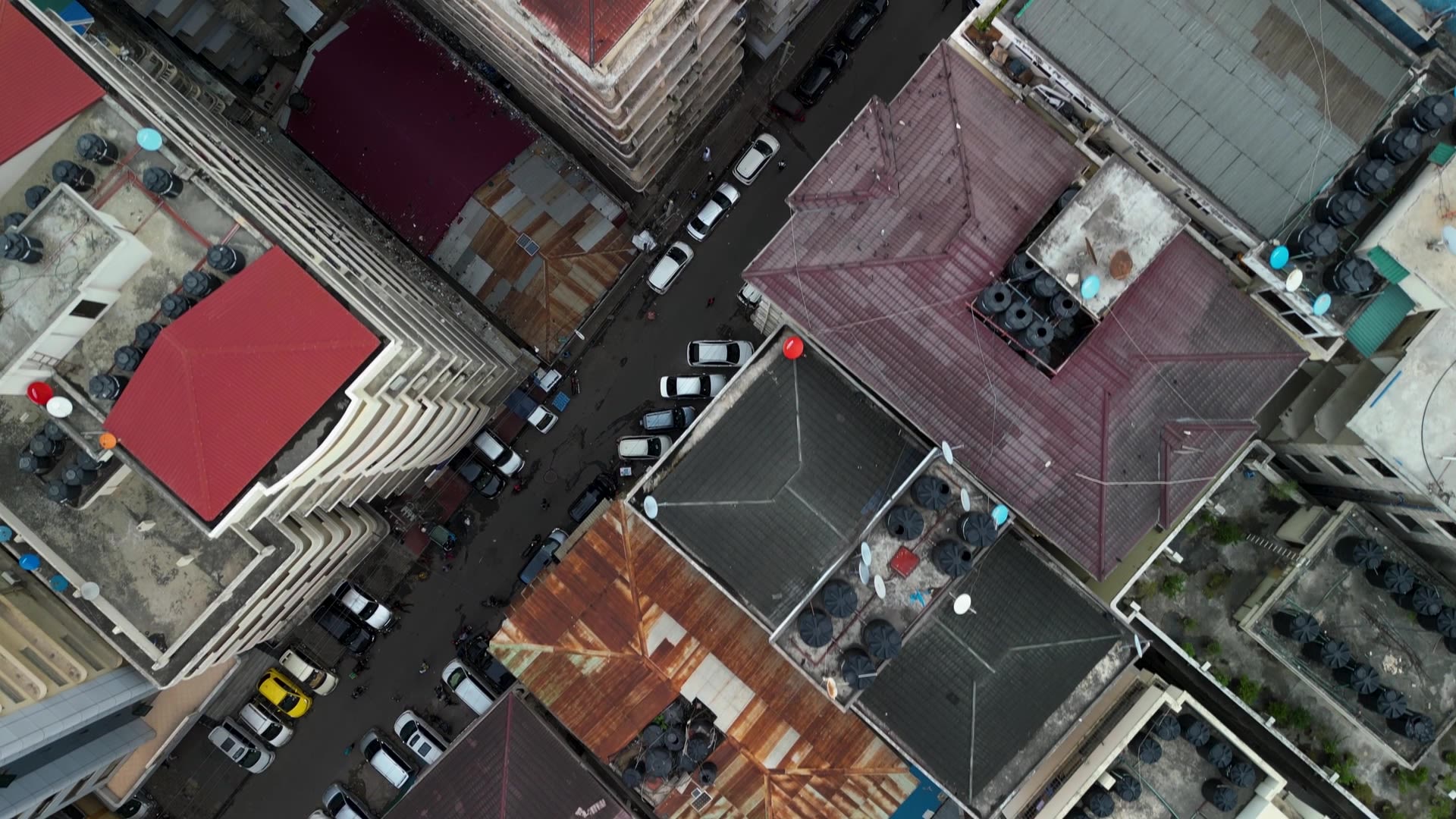
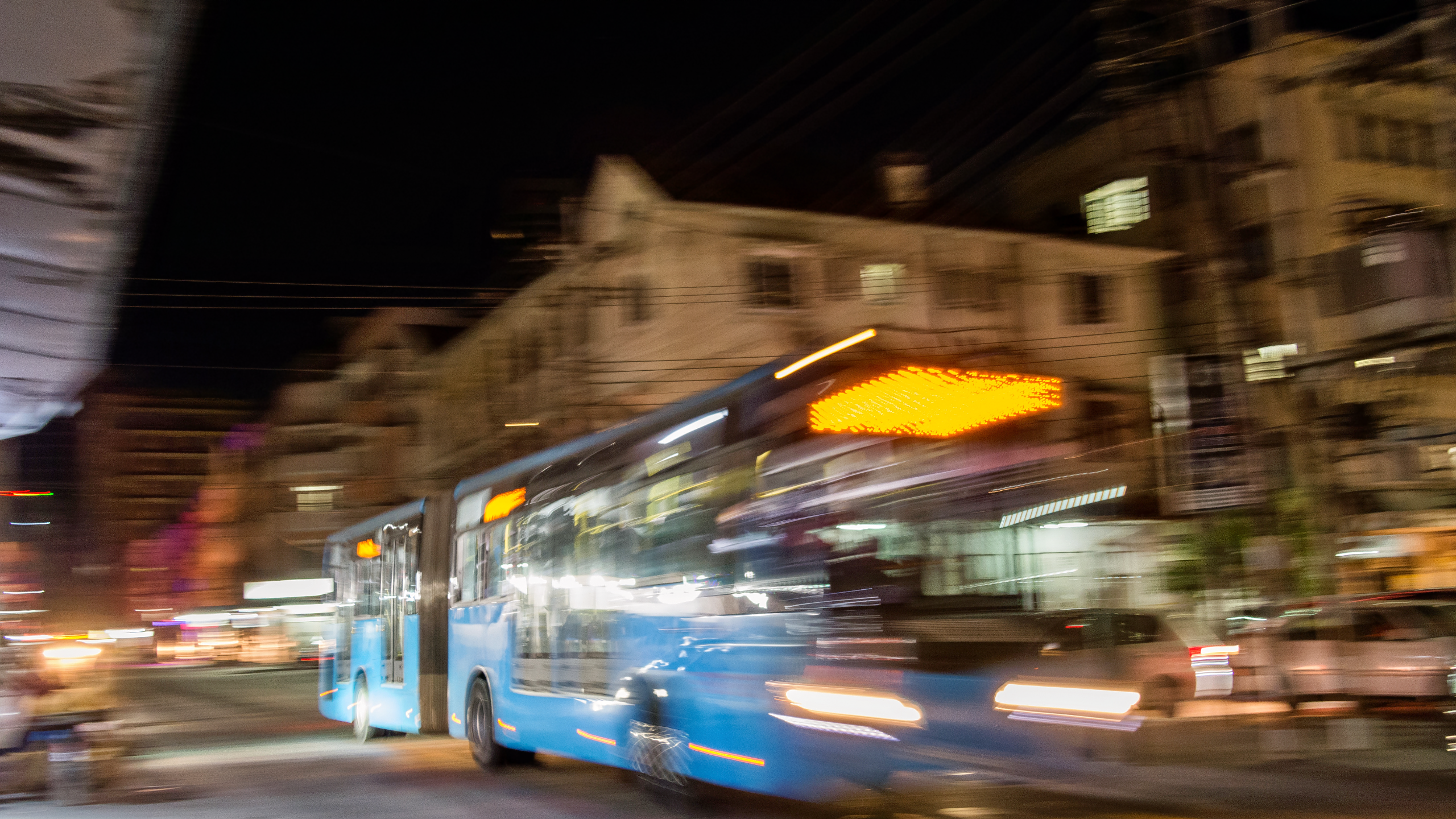
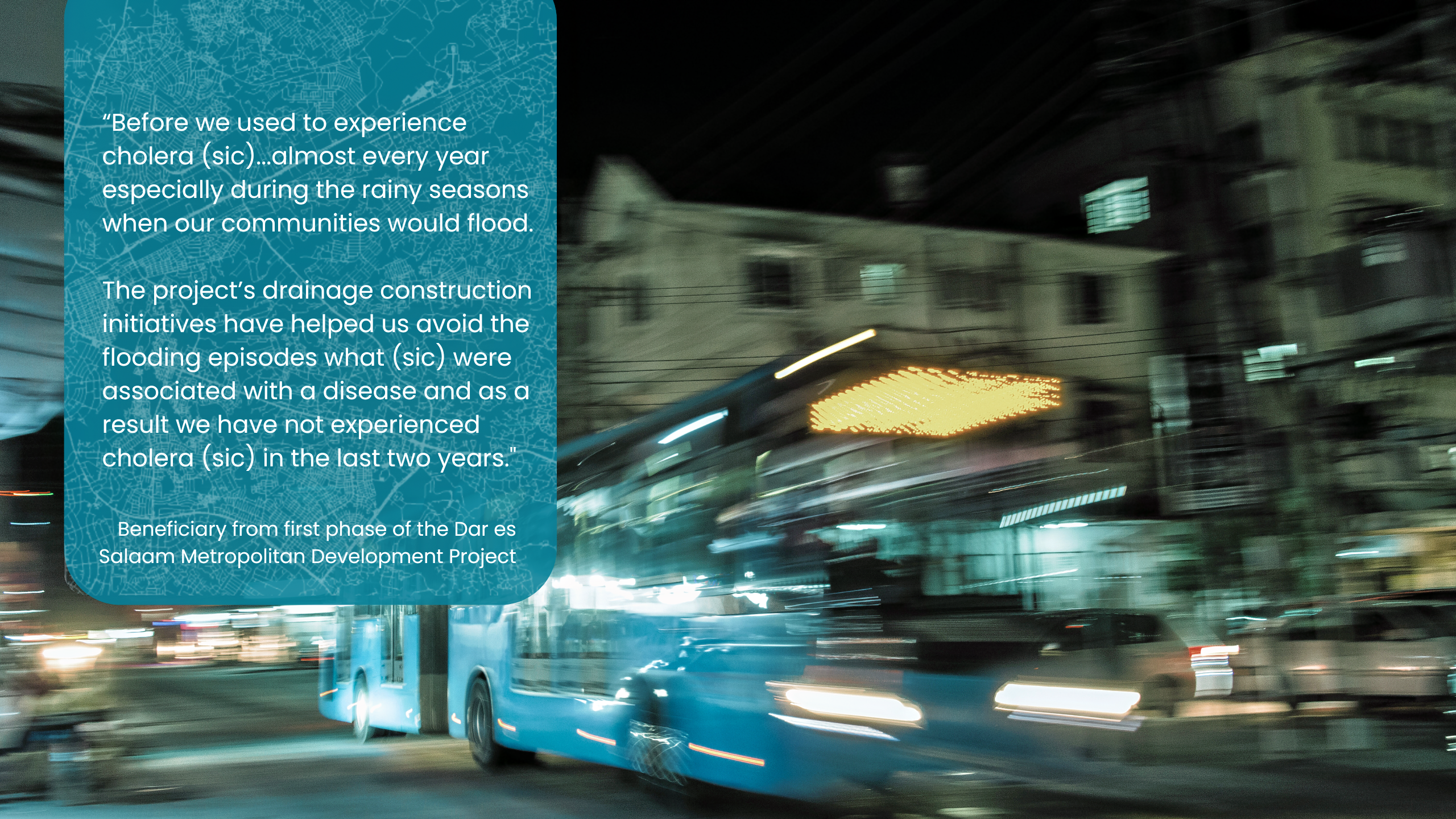
GFDRR has informed and enabled a range of transformative World Bank investments across the country.
Local voices are increasingly shaping the design and implementation of these investments, with co-design elements supported by technical assistance from the facility.
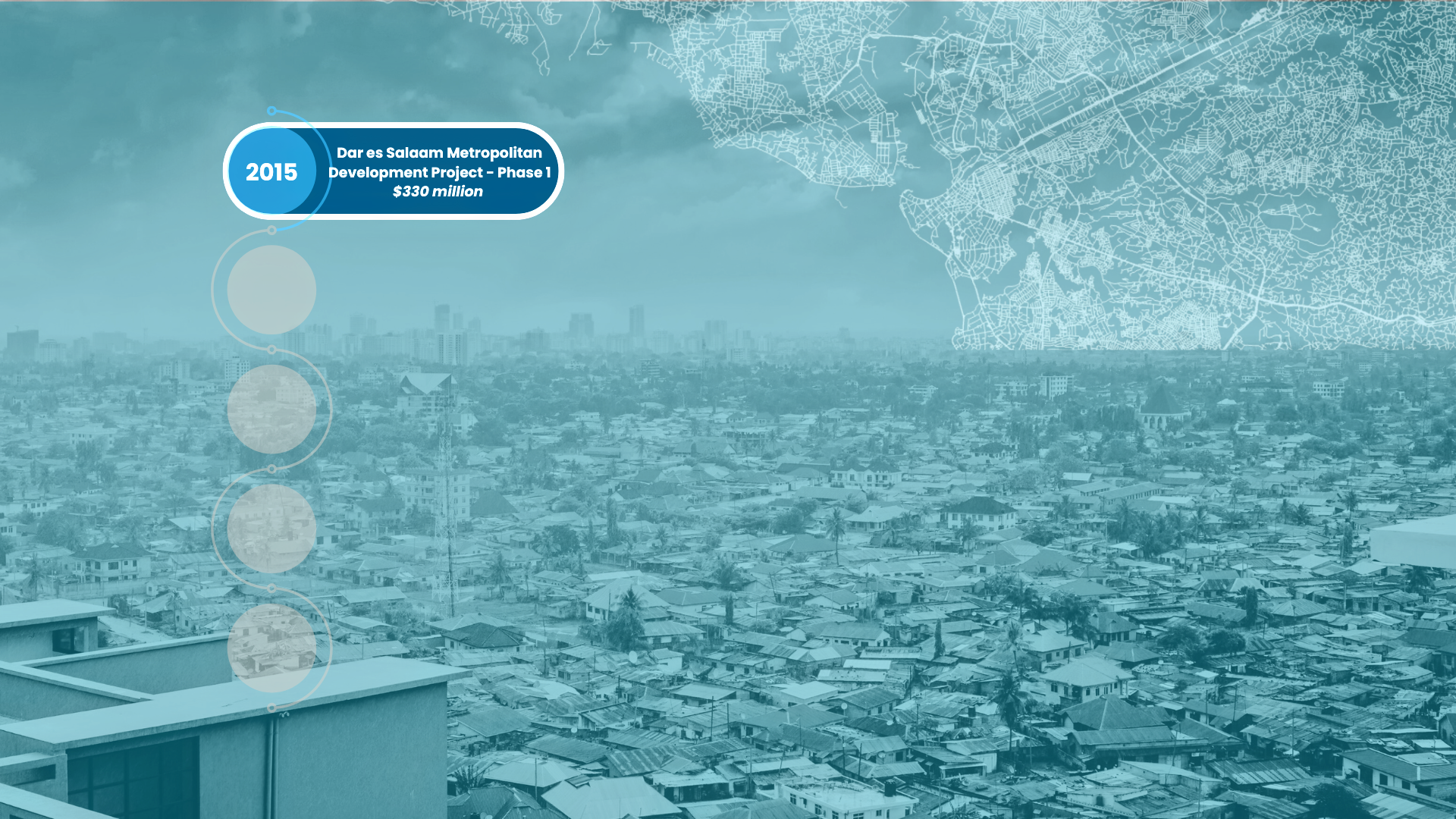
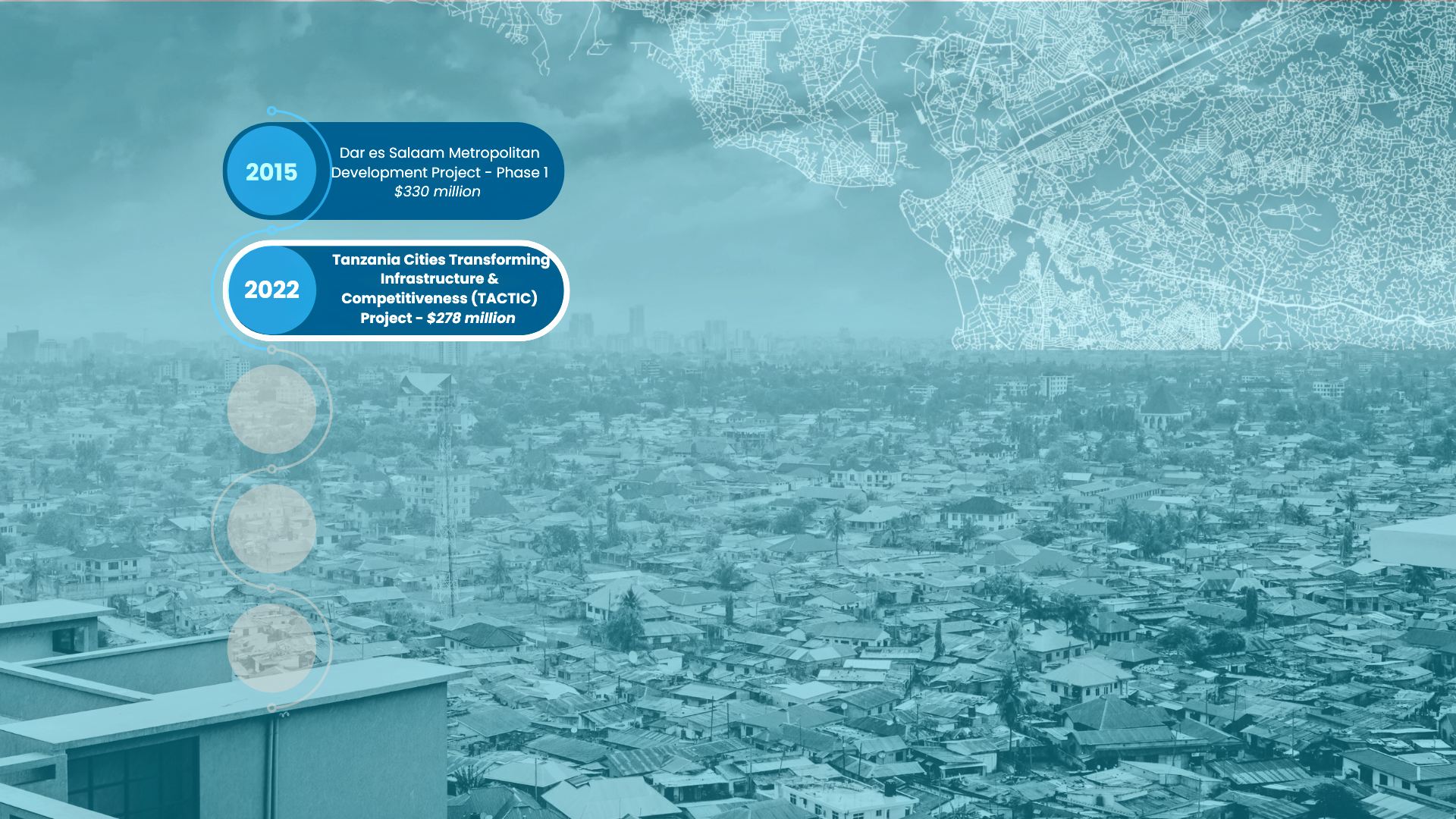
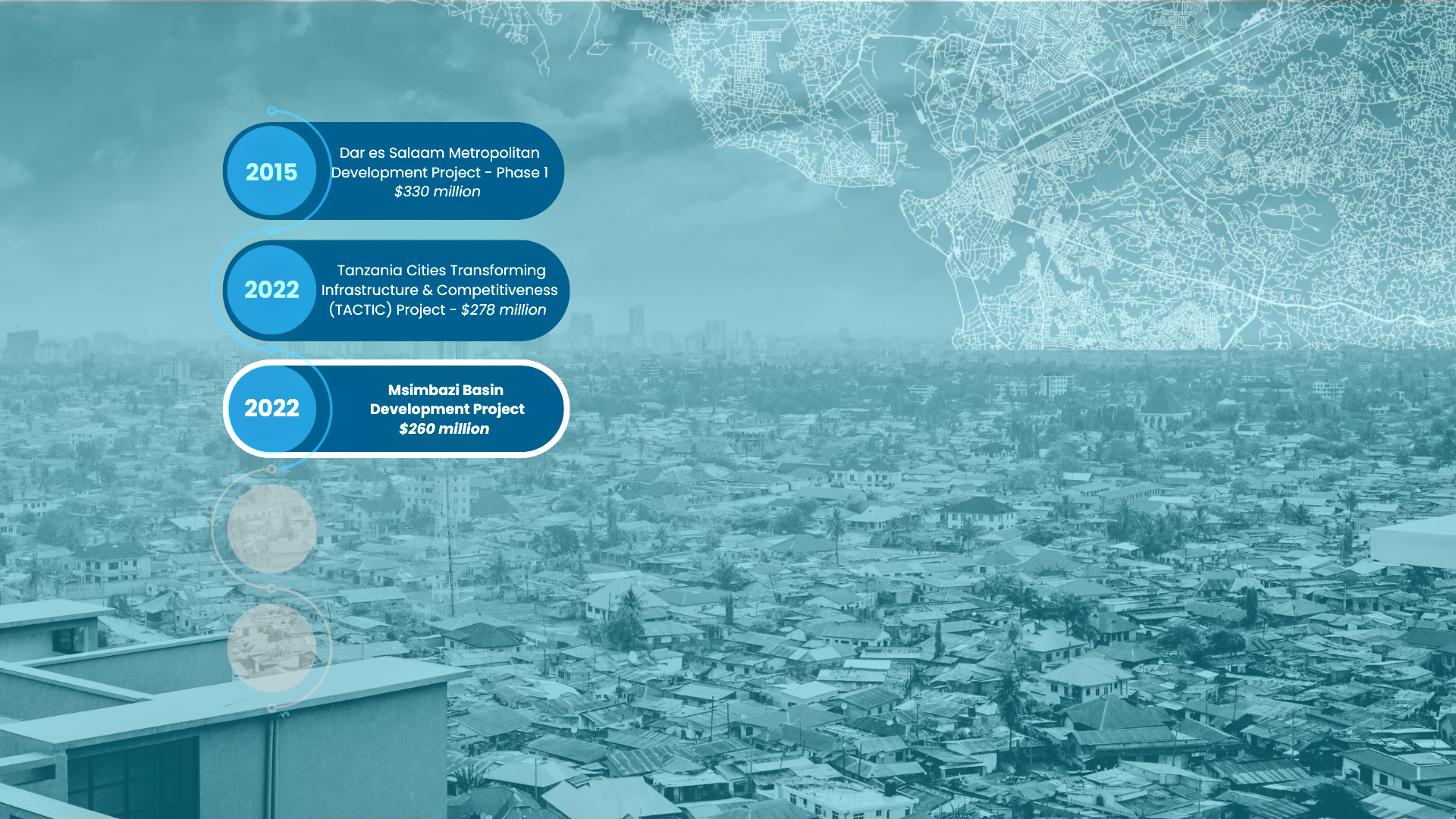
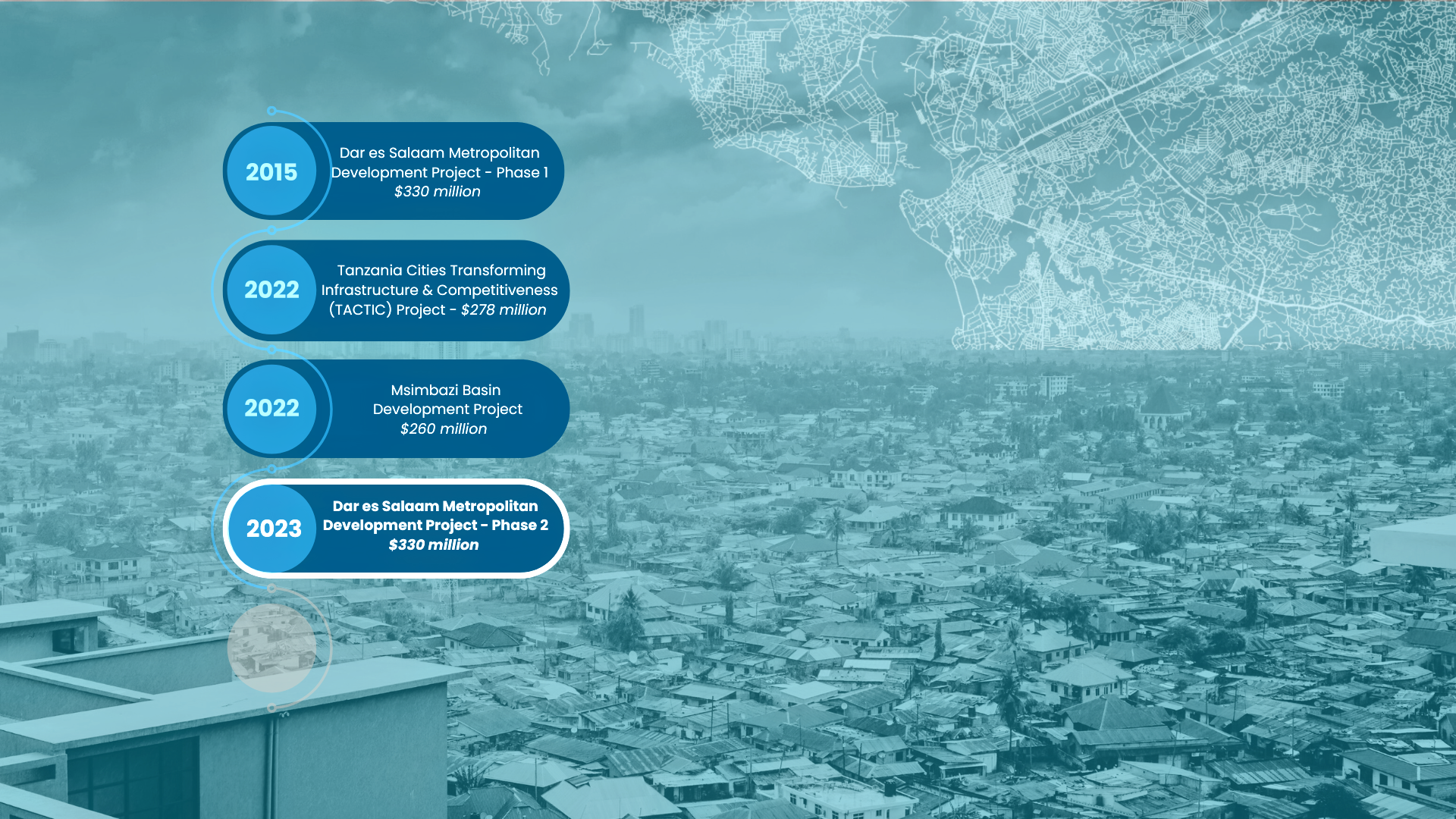
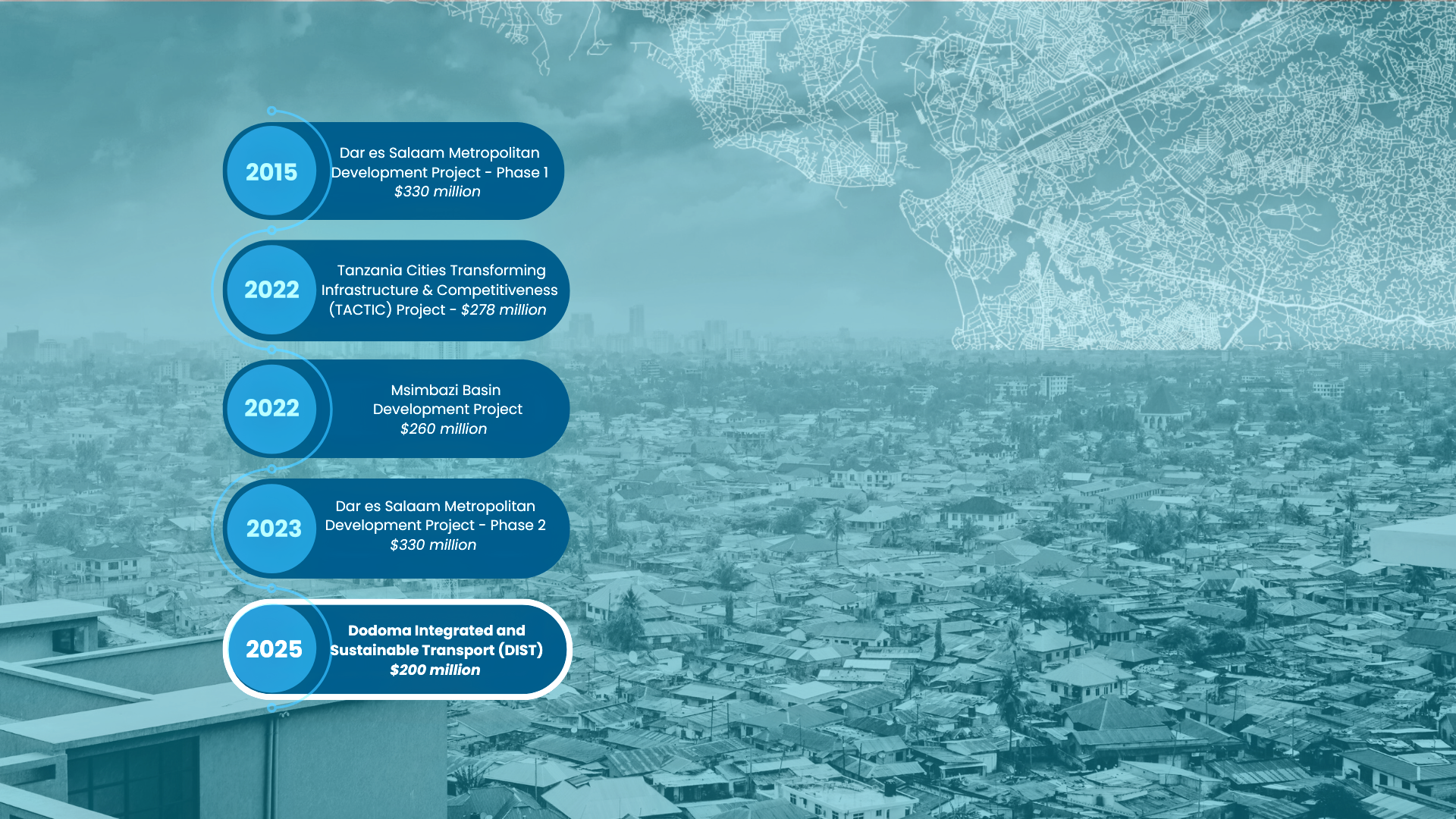
Dar es Salaam Metropolitan Development Project (Phase 1)
Through the $330 million first phase of the Dar es Salaam Metropolitan Development Project (closed in 2023), planners rehabilitated or constructed 75 kilometers of main stormwater drains. These interventions have reduced flood risk in Dar es Salaam, and protected over 400 hectares of urban land from flooding. Overall, 4.1 million people have benefitted from the improvements to urban services and infrastructure.
Tanzania Cities Transforming Infrastructure & Competitiveness (TACTIC) Project
The $278 million Tanzania Cities Transforming Infrastructure & Competitiveness (TACTIC) Project (approved June 2022) is strengthening urban management and resilient infrastructure for 5.5 million people spanning 45 cities across Tanzania. In keeping with GFDRR’s commitment to co-creating resilience solutions, support is being provided to local government authorities to engage community groups on the development of community resilience plans.
Msimbazi Basin Development Project
The $260 million Msimbazi Basin Development Project (approved September 2022) is strengthening flood resilience across 420 hectares of the Msimbazi Basin, while also creating 2,000 jobs. It includes moving the most vulnerable households out of high-risk flood zones as a preventive measure, and developing resilient real estate, with the latter supported by CRP. GFDRR’s experts working on nature-based solutions are also supporting the development of a large urban park with a flood retention function, among other interventions, to complement structural drainage works.
Dar es Salaam Metropolitan Development Project (Phase 2)
The $330 million second phase of the Dar es Salaam Metropolitan Development Project (approved December 2023) is strengthening climate-resilient urban infrastructure and services for 3.3 million people in the Dar es Salaam region. It includes solid waste management interventions to improve service delivery, among other initiatives to strengthen flood resilience, improve human health, and create jobs .
Dodoma Integrated and Sustainable Transport (DIST) Project
The $200 million Dodoma Integrated and Sustainable Transport (DIST) Project (approved March 2025) is improving resilient urban mobility in Dodoma through upgraded corridors, resilient access routes, and enhanced walking and cycling infrastructure. The project will create over 10,000 new jobs by 2030, benefiting more than 430,000 people.
Strengthening Policy and
Institutional Frameworks for Disaster Risk Management
and Financing
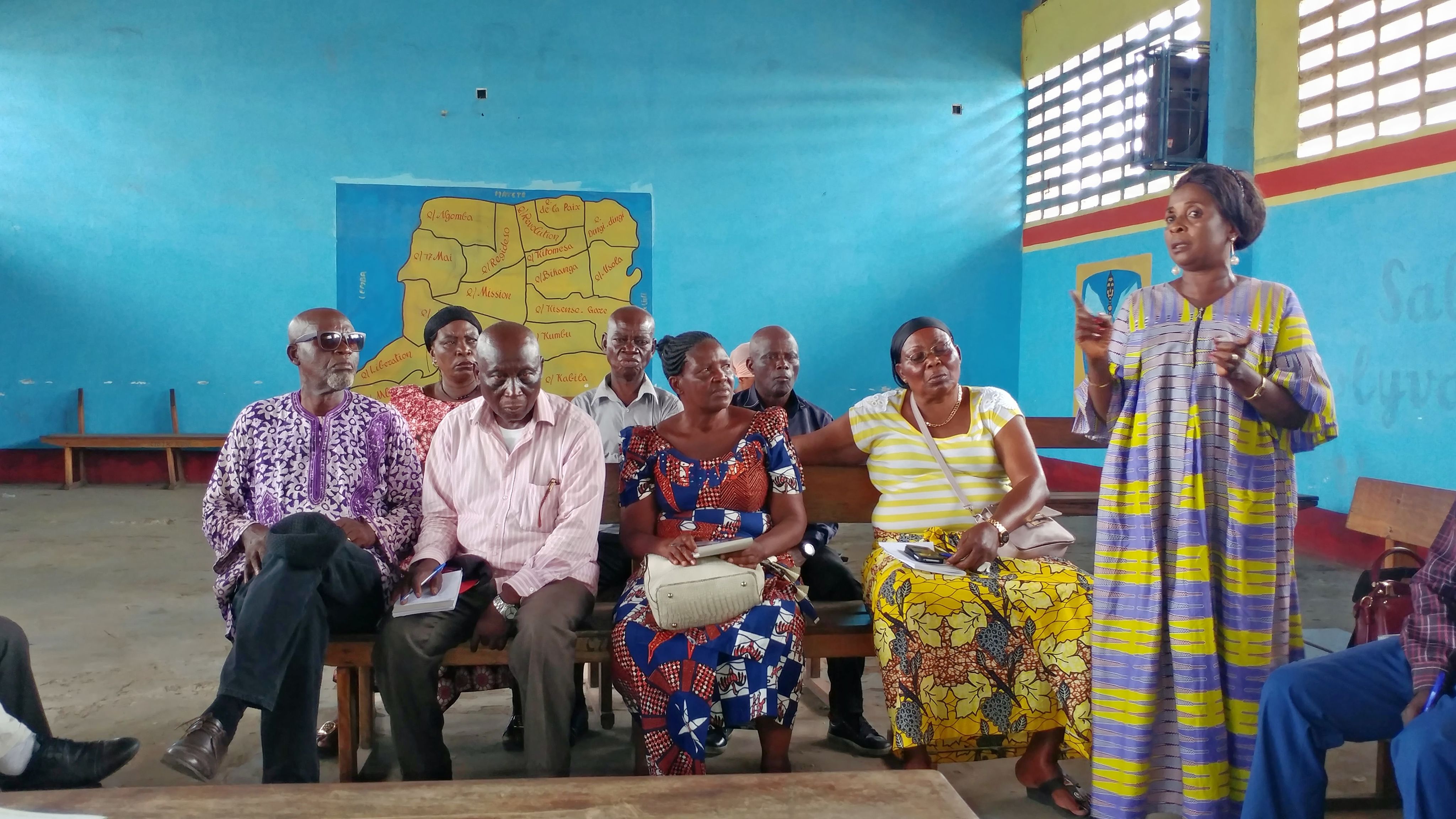
GFDRR has supported the Government of Tanzania’s assessment of legal, policy and institutional frameworks for disaster resilience, paving the way for key reforms.
- For example, the facility helped implement a policy that operationalizes the 2022 Disaster Management Act, setting national priorities, and addressing barriers to action. The law established clear coordination mechanisms for disaster management interventions across ministries, agencies, regional secretariats, local governments and the private sector.
- Tanzania’s progress on reforms across sectors including urban development, energy, water, and health led to the World Bank’s approval in June 2025 of $100 million Development Policy Financing (DPF) as budget support and $200 million allotted to a Catastrophe Deferred Drawdown Option (Cat-DDO). Expected to benefit 1.9 million people, this new financing will help ensure that Tanzania will have the resources it needs to recover and rebuild without delay after a disaster or emergency, while also receiving continued support to advance its ambitious reform agenda.
Coming Together at the
GFDRR Partnership Days
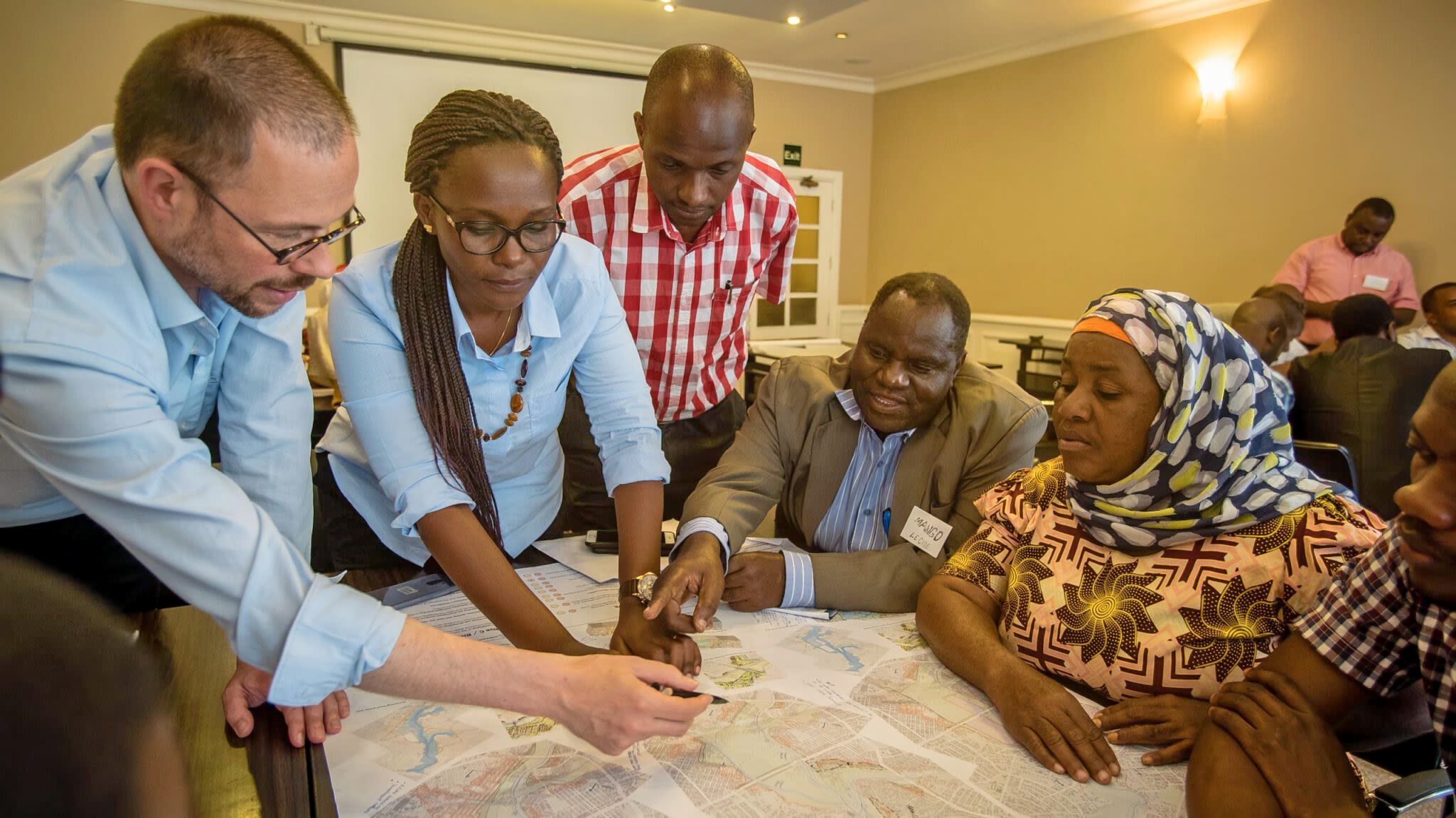
Spanning across a range of the facility’s thematic areas, from disaster risk analytics to emergency preparedness and response to city resilience, GFDRR is committed to further deepening its long-term engagement with Tanzania.
It is in that spirit that GFDRR is hosting the next edition of the GFDRR Partnership Days in Tanzania from June 24 to 27, 2025. This event will bring together government officials, GFDRR members, observers, partners, and World Bank staff to exchange insights and lessons that can inform resilience-building in Tanzania and beyond.
Additional Resources
Resilience Academy – Education for Improved Urban Resilience
Resilience Academy: Building Skills, Capacity and Sustainability in Tanzania
Urban Flooding, Land Value Capture & VR: Innovative Solutions in Dar es Salaam
Solid Waste + Trash Mapping – Community-driven solutions for urban waste
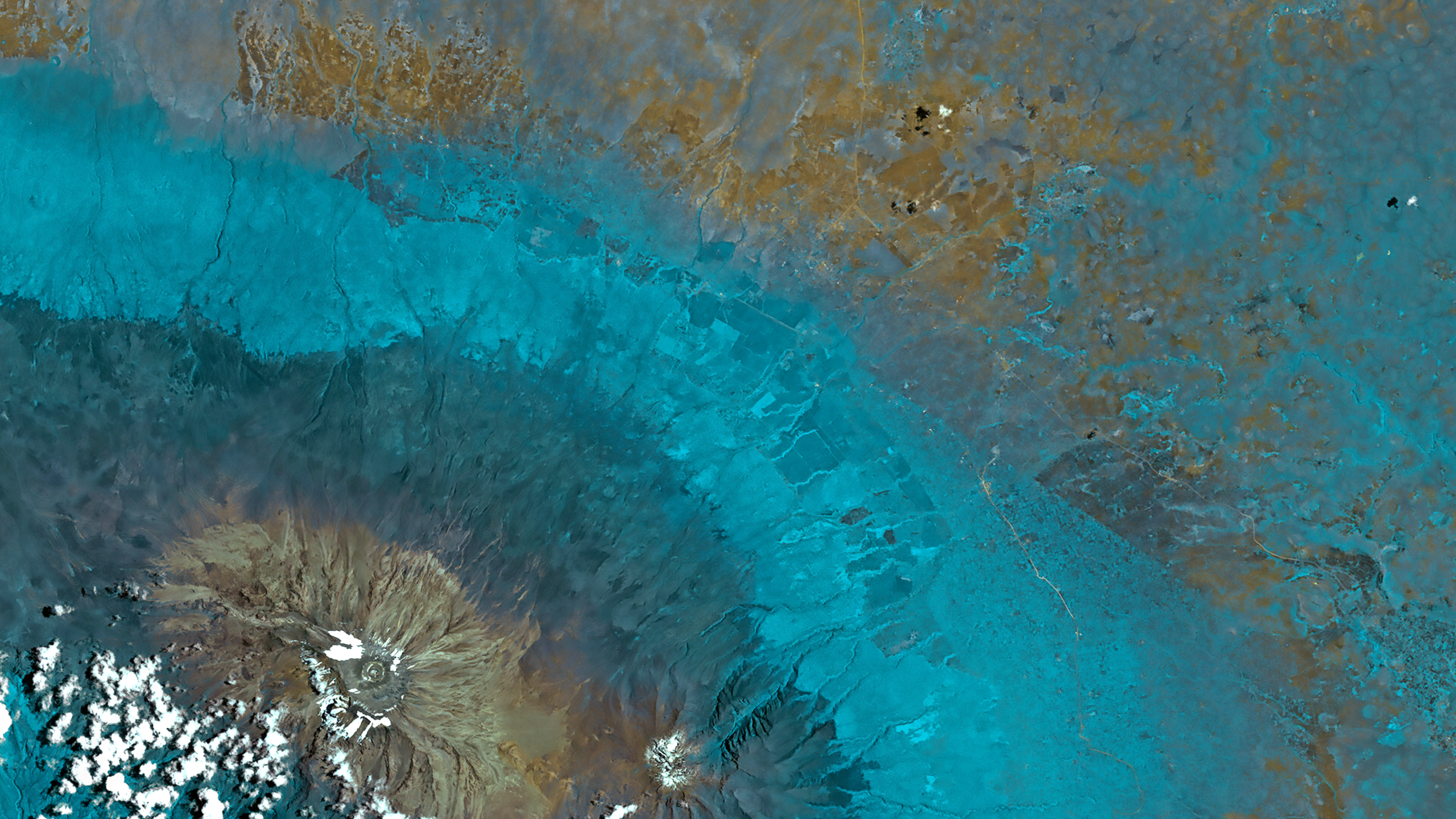
Video and Photo credits: World Bank Group unless otherwise noted.
This immersive story was designed and developed by Yann Kerblat and Erika Vargas.

